My Personal Development Plan as a Future Teacher
Being a teacher has always been my dream. Being a teacher who makes a difference, I believe, is my goal. That is precisely the reason why I pursue studies in becoming an effective teacher.
Professionally, I am aware that teachers need much training for all the tasks expected of them when they begin work. Being an effective teacher encompasses a wide spectrum of responsibilities – from designing an environment conducive to learning, to planning appropriate lessons for students and implementing them with effective educational strategies to being able to manage the class well and instilling discipline in the students, to involving parents and coordinating with others regarding the provision of quality education for the students.

What are your goals in the next five years? In the next 10 or more years?
Within the next year and a half, I see myself with a degree and ready to face the challenges of becoming hired as a teacher. I do not seek a position in a highly prestigious school. In fact, I have set my sights on working for a low-income school. That way, I fulfill my dream of helping children who are more in need of my services.
I would like to teach first grade students. Children at that age are still very impressionable. I find it a challenge to be able to reach out to them and touch their lives in an age where the foundations of learning are being established.
Gaining teaching experience for two years or so, I will keep myself alert in observing the learning needs of children of this generation and how I can better help them. Globalization may bring a great progress in many areas, however, it may likewise cause a lot of conflicts such as multi-cultural conflicts in education as well as the widening gap between the rich and poor. I find it in my mission to contribute something good to lessen, if not close the gaps in terms of discrimination in the provision of quality education for all.
With this burning mission at heart, I shall set out to pursue my master’s degree in Education, specializing in Educational Leadership. This degree will arm me with the knowledge and skills I would be needing in the coming years as I work towards a career in Educational Advocacy. I see myself in that field of Education in ten years.
Eventually, having earned credence as a professional educator and advocate, I shall be ripe for a leadership position in a school in ten years or so. By then, I would have mentored many young teachers and maybe influenced them with my philosophy of helping less privileged children. If I am to become a school principal, my agenda would be to take action as a school entity to provide high quality education to an adoptive school for less privileged children.
What steps are necessary to get you to your goals? What obstacles can you foresee and how will you overcome them?
I may have lofty ideals, but I know I can reach my dreams if I sustain my zeal to reach them. Currently, I am working hard for a degree that provides me with the stepping stones to the fulfillment of my dreams. In the mean time, I shall build a network with other people active in the educational field.
I am sure I will gain much knowledge from them, and these network contacts may be instrumental in helping me in my future projects on education for less privileged children. One of society’s concern in education is reaching out to all students regardless of race, socio-economic status, ability, faith, etc. It is a fact that various backgrounds of students may keep them from getting the kind of education they deserve.
Joining professional organizations will also help me do that as well as provide me with training seminars and workshops to hone my teaching skills.
Possible obstacles to this journey may be family concerns, as I know myself to be an individual who would place family first. However, some family concerns may be causal factors in hindering me from pursuing a degree, taking on an employment position as a teacher, or completing a masteral degree.
What is one principle from the INTASC Principles Web site that you feel you need to improve the most in order to be effective in the education profession? What existing professional development program(s) could you pursue to address the need to improve in this area?
Looking at the list of INTASC Principles, I am humbled to say I need to hone my skills in all. I have so much to learn as a new teacher and it is not as easy as I thought. The principle that struck me most as needing the most improvement for me is principle number 3 which is Learning styles and diversity. I know children learn in various ways, not just through visual and auditory means, as most people think. To be a more dynamic teacher, I know I have to acknowledge, respect and adjust to various learning styles.
That would entail adjusting my teaching styles to a diverse set of learners. Although teachers are expected to know what to teach children in general, they also need to be able to adjust to individual needs of their students, as not all students learn the same way at the same pace.
Trafton suggests that individualization must include “acceptance of each child as an individual worthy of adult respect,” and that to this should be added “an acceptance of the child’s ideas, a provision of opportunities for pupil input in developing and selecting learning experiences, a concern for the quality of the child’s intellectual development, and a willingness to take time to know the child as an individual” ( 1975, p. 39 ).
Attending seminars and workshops on Different Learning Styles (ex. By Dunn and Dunn) and Howard Gardner’s Multiple Intelligence Theories will surely help me gain adequate knowledge and skills in this area of weakness of mine.
What professional development programs can you enroll in to help you prepare to meet the diverse needs of today’s learners?
Aside from taking elective Education subjects outside my programme, I may also take some special education courses to understand the needs of children with special needs. I may also cross-enroll in subjects that deal with multicultural differences to understand how various cultures conduct themselves – their ideals, their beliefs and behaviors as shaped by their cultures. In doing so, I may be able to understand and possibly address their educational needs.
How will you evaluate your progress? What will help keep you motivated toward achieving those goals?
Working with a teacher-mentor would indeed help me in the assessment of my progress as there is another eye that keeps me in check. Regular observations both of me and of my mentor at work and regular meetings on my performance and progress will keep me aware of my demeanor as a teacher. Of course, self-reflection is necessary.
According to Osterman (1990), “reflection is the essential part of the learning process because it results in making sense of or extracting meaning from the experience”. People often go through their day doing their work as second nature, sometimes without thinking critically if what they are doing is truly meaningful and relevant. Schon (1983) offers the concept of knowing-in-practice to describe such mindless, functional task.
An individual needs to reflect, as it can surface and criticize old, reliable ways of doing things. “Practitioners do reflect on their knowing-in-practice. But they may also reflect on practice while they are in the midst of it. Here they reflect-in action.” (62) This may be difficult to do when one is busy at work, but working as if there is always watching one’s every move keeps the individual aware of good and bad practices, and tend to keep the good practices.
What professional organizations will you join? Why? What do you expect to gain from membership in these organizations?
Joining professional organizations such as the National Association for the Education of Young Children (NAEYC), the Association for Childhood Education International (ACEI) and the International Reading Association (IRA) truly uplifts teachers to be more professional in their craft
. They provide seminar-workshops conducted by experts in the field who deliver research-based talks to update their participants. Professional journals also go with memberships in these organizations which provide articles and readings on the latest developments in the field. However, the best advantage in joining such organizations is networking with co-professionals in the field, as much learning ensues in exchanging notes about each one’s current practices.
One can also validate his or her current practice in networking with other professionals. Also, as member, one feels a certain sense of pride and dignity of being a teacher, as consistently communicated to them by these prestigious organizations.
Teachers are considered lifelong learners, and are expected to model such quality to inspire their students. Judith Little (1982) recommends teachers to collaborate with each other to come up with more effective instruction
. They should engage in frequent, continuous and increasing concrete and precise conferences on their teaching practice and be able to reflect if these practices are working to encourage success in their students. They should be open to feedback and allow frequent observation of their teaching performance. Together, they should plan, design, research, evaluate and prepare teaching materials. They should also support and coach each other on other practices of teaching.
What techniques will you use to help you develop leadership skills?
Aside from reflection, I can also equip myself with knowledge and skills from readings and self-education. Attending seminars and workshops on leadership will also go a long way. The most important thing for me is to engage the contributions of the members of the group. In a research reported by French, Simpson and Harvey (2001), a good leader is also equipped with ‘negative capability’. “The underpinning image of leadership is based on knowing and is manifested through activity, work and achievement.
There is, however, a quite other dimension of leadership, based on not knowing, on not doing, on being-done-to, and on being no longer in control of one’s own situation.” (French, Simpson & Harvey, 2001). I interpret such a construct as being humble enough to admit when one doesn’t really know instead of putting up a façade of being all-knowing.
Tolerating enough ambiguity to keep the creative juices flowing in the organization is balanced with seeking coherence in the chaos. Fullan states, “All of this complexity keeps people at the edge of chaos. It is important to be at that edge because that is where creativity resides, but anarchy lurks there too” (Fullan, 2004, p.5).
This peculiarly human capacity to live with and tolerate ambiguity, of being content with half knowledge is quite a refreshing concept. “It implies the capacity to engage in a non-defensive way with change, without being overwhelmed by the ever-present pressure merely to react. It also indicates empathy and even a certain flexibility of character, the ability ‘to tolerate a loss of self and a loss of rationality by trusting in the capacity to recreate oneself in another character or another environment’ (Hutter, 1982, p.305).
This leads us to the next statement, “A good leader is always open to learning something new, and not haughty enough to claim that he is already “made”.” Being human and fallible is one trait that all members of the group share, and what better quality to relate to than that? Group members will even feel important enough to share the burden of thinking up solutions to problems with their leader. I am humble enough to admit when I do not know what to do, and I believe this humility will endear me to my followers to help me be a better leader….. and a better teacher.
Cite this paper
- Chicago (N-B)
- Chicago (A-D)
StudyCorgi. (2021, November 18). My Personal Development Plan as a Future Teacher. https://studycorgi.com/my-personal-development-plan-as-a-future-teacher/
"My Personal Development Plan as a Future Teacher." StudyCorgi , 18 Nov. 2021, studycorgi.com/my-personal-development-plan-as-a-future-teacher/.
StudyCorgi . (2021) 'My Personal Development Plan as a Future Teacher'. 18 November.
1. StudyCorgi . "My Personal Development Plan as a Future Teacher." November 18, 2021. https://studycorgi.com/my-personal-development-plan-as-a-future-teacher/.
Bibliography
StudyCorgi . "My Personal Development Plan as a Future Teacher." November 18, 2021. https://studycorgi.com/my-personal-development-plan-as-a-future-teacher/.
StudyCorgi . 2021. "My Personal Development Plan as a Future Teacher." November 18, 2021. https://studycorgi.com/my-personal-development-plan-as-a-future-teacher/.
This paper, “My Personal Development Plan as a Future Teacher”, was written and voluntary submitted to our free essay database by a straight-A student. Please ensure you properly reference the paper if you're using it to write your assignment.
Before publication, the StudyCorgi editorial team proofread and checked the paper to make sure it meets the highest standards in terms of grammar, punctuation, style, fact accuracy, copyright issues, and inclusive language. Last updated: November 18, 2021 .
If you are the author of this paper and no longer wish to have it published on StudyCorgi, request the removal . Please use the “ Donate your paper ” form to submit an essay.

How to build a professional development plan for teachers
Learn a 4-step framework for building a professional development plan that fosters better teaching and ultimately improved student achievement.

by Michelle Schweikhardt
Visit our Administrator Hub to find more articles like this.
To be successful in today’s classroom, educators need to be committed to the idea of being lifelong learners. In fact, staying up to date on the latest educational trends and best practices is essential to providing students with the best possible education.
That is where a professional development plan comes in. A professional development plan is a road map for professional growth. Educators achieve personalized goals by setting specific objectives, identifying resources, and tracking progress through professional development plans.

A professional development plan can help new and experienced teachers pursue lifelong learning while staying ahead of the curve. However, crafting an individual professional development plan for teachers of all stripes can seem like a daunting task. With so many priorities on the typical teacher’s radar, it’s hard to know where to start.
This guide provides a 4-step framework for building a professional development plan that fosters better teaching and ultimately improved student achievement.
Step 1: Assess current skills and areas for growth
Self-assessment One method of evaluating skills is a self-assessment. This can help teachers identify their strengths and reveal areas of improvement . Six questions teachers can ask to guide their professional development plan include:
- What do I want to achieve this school year?
- What are my strengths? Weaknesses?
- What do I want my students to achieve?
- What do I want to learn more about?
- What are the needs of my students?
- In what ways do I need to better align my professional development with any district initiatives?
Feedback from colleagues Asking colleagues for feedback on teaching practices, or participating in classroom observations, can provide a less intimidating approach to help teachers gain insight into their effectiveness and teaching styles.
Formal evaluations Performance reviews or evaluations conducted by an administrator or coach can provide valuable feedback on effectiveness as well as identify areas of improvement based on set standards and guidelines.
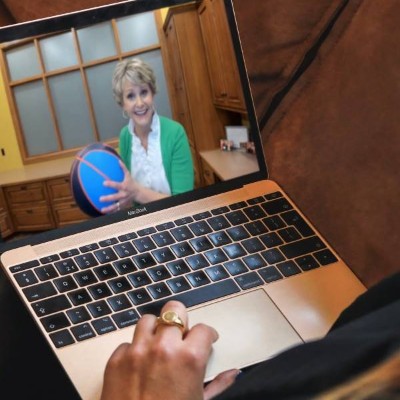
FREE ON-DEMAND WEBINAR
Advance Beyond Doing Reading to Teaching Reading
Learn what explicit, whole-class comprehension instruction looks like and how to effectively scaffold mini-lessons within the rest of the reading block to honor the gradual release of responsibility.
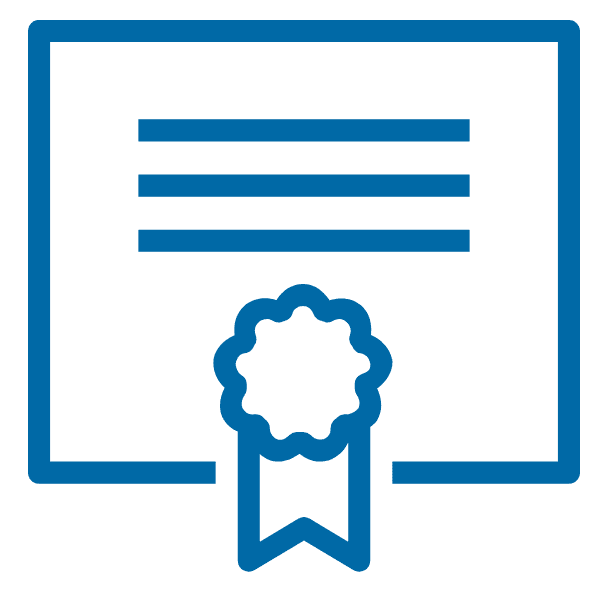
Earn a completion certificate
60-minute webinar
Step 2: Set SMART goals for professional development
Once teachers have assessed their skills and identified areas for growth, the next step is to set SMART goals for professional development .
SMART goals are:
- S pecific–What do you want to achieve?
- M easurable–How will you know when you’ve achieved your goal?
- A chievable–Is your goal realistic and within your reach?
- R elevant–What makes this goal appropriate for you/your students?
- T ime-bound–When do you want to achieve this goal?
Each goal should be clear, quantifiable, realistic, aligned with overall objectives, and have a specific deadline for completion.

How does a SMART goal compare to a typical goal? Rather than setting a goal to “improve my teaching skills,” a teacher could set a SMART goal like: “I will intentionally plan and deliver 4-step mini-lessons during whole-class comprehension instruction in order to demonstrate 80% mastery of this best practice by the end of the school year.”
This professional development plan for teachers example contains a SMART goal that is specific to a teaching practice and content area—delivering dynamic mini-lessons in reading comprehension.
It references a benchmark of 80% mastery that is measurable by assessing the number of times it was documented in teacher lesson plans.
Although the rationale for making a SMART goal achievable and relevant may not be explicitly stated in the goal, it is important to take it into account. In this example, the goal is achievable because it doesn’t require 100% implementation and relevant because it is associated with global best practices.
This SMART goal is time-bound because it focuses on a teaching practice that, with ample time for practice, makes it achievable by the end of each quarter.
Setting SMART goals establishes a clear course for a teacher professional development plan, enabling teachers to align each component of the plan with their overall objectives.

Step 3: Create a plan to implement the goal
Once teachers have set a SMART goal, they can create a road map to outline the actionable steps that will help them achieve the goal. Teachers may question what essential features to include in a PD plan . A comprehensive plan includes:
Active learning Active learning requires teachers to participate in the learning process. When selecting activities for a professional development plan, teachers benefit from engaging in similar experiences to those in the classroom . This can include attending workshops, conferences, and in-person or online courses.
Effective practices Educators can improve by continually learning effective practices that are rooted in research. Teachers can start by identifying best practices that are directly related to the SMART goal objective. This may include learning more about strategies for instructional planning, student engagement, gradual release of responsibility, learning styles, or differentiation.
Resources If teachers don’t have the right resources, achieving the goal could be much harder or even impossible. Teachers need to identify the tools they need to meet the goal. This could include a variety of sources, from people to books to online resources.
Collaboration Collaboration is an essential part of an effective individual professional development plan for teachers. By collaborating with other educators, teachers can build upon previous understandings, gain clarity, solve problems, and plan for the implementation of new initiatives.
Methods of collaboration may include 1:1 coaching, grade-level team meetings, professional learning communities, and more.
When utilizing third-party offerings such as Smekens Education’s Remote Coach service , educators can collaborate about previously-learned strategies and focus on the specific facets of implementing them with success.
Data, reflection, & feedback Data can guide reflection and feedback while helping to determine future professional development needs. By looking at both qualitative and quantitative student data, educators can identify patterns, trends, and outliers as they apply what they have learned from professional workshops, reading, collaboration, etc.

Plan with a template A professional development plan template for teachers organizes each of these components and creates a visual road map that can be referred to throughout the year. To make the plan more productive, a time line with dates and benchmarks should also be included. This helps teachers stay on track with their professional development goals and ensures that they are making progress.
Whether creating a template from scratch or using a pre-established professional development planning template, evaluate the template and ensure that it covers the essential steps to create a tailored and focused teacher professional development plan.
Once the road map has been created, it is essential to put it into action. This involves proactively scheduling time for professional development activities such as workshops and conferences, in-person or online courses, webinars, and book studies.
It’s important to be proactive and take ownership of professional development. Follow through on commitments—but be flexible and adjust plans based on progress or changing needs.
Step 4: Measure the success of the teacher professional development plan
For example, with the sample SMART goal provided, a benchmark could be to increase the planning and implementation of the 4-step mini-lesson in reading by 10% each quarter. To track progress, collect data from how many lesson plans were crafted using the 4-step mini-lesson and evaluate the impact of the professional development activities on your capacity to deliver dynamic mini-lessons effectively.
By measuring the success of the professional development plan, educators can identify areas of improvement and adjust the plan accordingly.
Stay motivated and accountable Staying motivated and accountable is essential for achieving professional development goals. Once the SMART goal is set, follow these four simple tips to stay on track:
- Be realistic: Make sure your goals are achievable and aligned with overall objectives.
- Stay organized: Keep track of professional development activities and deadlines using a planner or calendar.
- Find a support system: Work with colleagues or a mentor to stay motivated and accountable.
- Celebrate successes: Take time to acknowledge achievements and celebrate progress.
Ongoing professional development is essential for teachers who want to stay current, improve their teaching skills, and provide the best possible learning experience for their students. In addition, teachers earn continuing education credit for most professional development experiences. Most states require a minimum number of continuing education credits for licensure renewal.
By developing a professional development plan tailored to specific needs, setting SMART goals, and creating a road map for implementation, teachers can take their careers to the next level and unlock their full potential as an educator.
Resources to help you succeed—from Smekens Education
Set up your professional development plan, then check out how Smekens Education can support your success.
- Improve your writing instruction.
- Enroll in a workshop aligned to your goals.
- Subscribe to webPD to view relevant PD.
Professional Development Services
Teacher training.
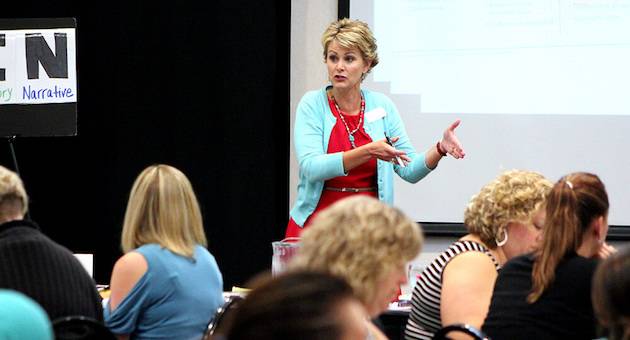
CUSTOMIZED CONSULTING
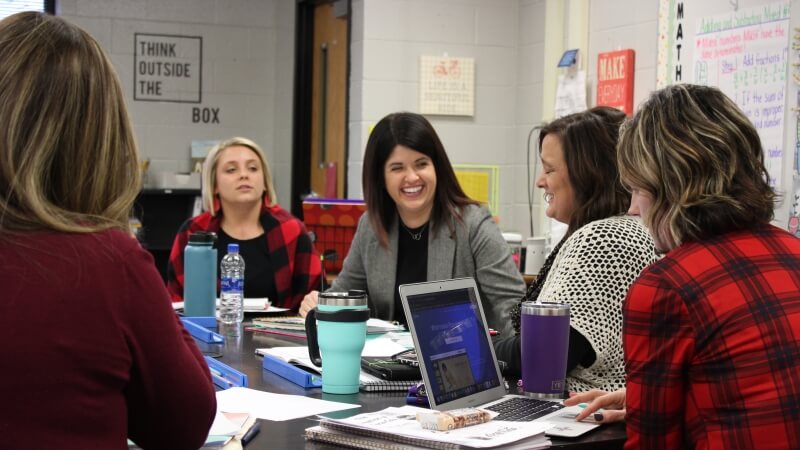
BOOKS & RESOURCES
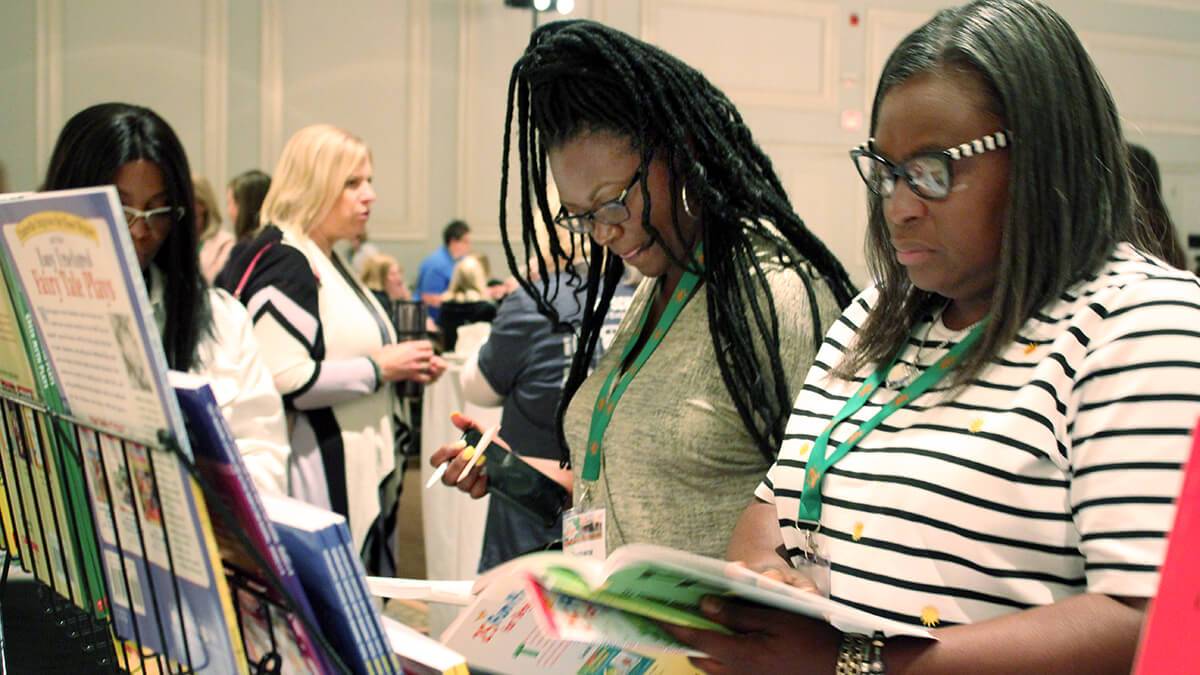
Have a Question?
Complete the form below or call (888) 376-0448 .

- Curriculum Blueprint
- Course Planner
- Unit Planner
- PLUS Institutes
- Understanding by Design
- Why Eduplanet21?
- Case Studies
- Marketplace
Latest Posts
Exploring the synergy of differentiat....
Empowering Education Through Technolo...
Video Interview with Jay McTighe on U...
Webinar: Implementing New Jersey's Re...
Featured blogs.
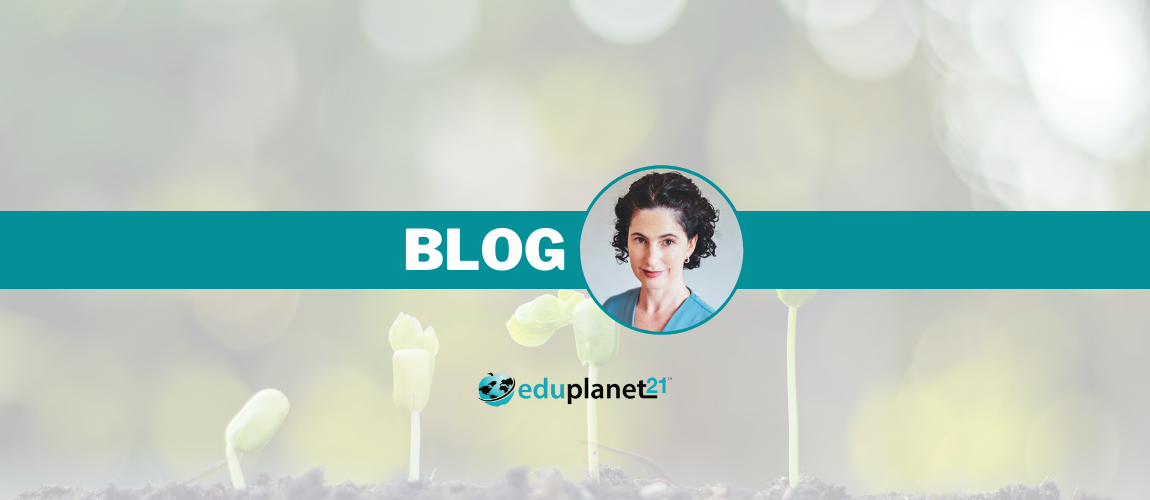
Personal Growth as Professional Development for Teachers
When your cognitive and emotional batteries are running low, recharge by taking a genuine rest and take on a small design challenge to re-energize you and your students/colleagues. You may not immediately consider personal growth activities as part of your personal professional learning plan - but you should!
This article explores some simple yet effective ways to impact your personal and professional lives.
What does genuine rest look like?
Last summer, I dove into reading Burnout: The Secret to Unlocking the Stress Cycle , and I was taken with the premise that wellness is not a state of being but a state of action.
This concept reframed from an elusive, nebulous pursuit of a magical vacation where I can sit on a beach and become well to a tangible set of practices and behaviors that are having a positive impact on my daily life. While the following suggestions are not new or earth-shattering, what might be the specificity of the habit and the celebration upon accomplishment.
Focus on your breathing: Even doing this for 1 minute has proven benefits. You can pay attention to your normal breathing pattern or try doing a breathing sequence (e.g., inhale for 4 counts, pause, exhale for 4 counts, pause).
What has been most helpful to me is that when my mind wanders, rather than scolding myself about lack of focus, I have learned to celebrate this as an act of mindfulness and then begin again.
Move your body: Whether it is a stroll down the hallway or around the block; a more intense strength building or a high-intensity routine, physical movement has a way of calming down the incessant chatter of worry, anxiety, and what if’s.
As I move, I am learning to celebrate the action I am taking in the moment rather than just after it is over. I also am tuning into when to add more intensity and when to back off depending upon my mood and how my body is feeling that day.
Develop a morning and nighttime routine: I admit, keeping the phone at arm’s reach is my kryptonite. It prompts me to unthinkingly scroll through social and news feeds and fritter precious time away. Plugin your phone across the room to help manage impulsivity.
Consider adding a gratitude practice where you name 1-2 moments/people/experiences that you appreciate at the end of the day or looking forward to at the start of the next day.
2) Design Challenge
What is a small design challenge that is worthy of the effort .
Consider one that can benefit your daily or weekly routine when working with students or colleagues. Small moves can still be “bold” moves, especially if you are committing to growing a particular practice or routine with your students and colleagues.
What is something that you are interested in working on? Instead of just naming the topic — e.g., feedback, increased student motivation — unearth the why working on this will impact your interaction with students/colleagues and your expertise. Do I really want to look into this? Do I have sufficient desire to get started (and stick with it)? If you have sufficient desire, the most natural thing to do is to act.
For example, there are timely and powerful learning Institutes on Eduplanet on topics such as Habits of Mind, Social Emotional Learning, Rebuilding for Equity and Inclusion, and Boosting Student Motivation. You can navigate by yourself asynchronously or can grab a like-minded partner and interact as a team.
What is a small step that you can take immediately to see if it is worthy of committing to? Start by taking action. You do this by making little bets to get something out into the world by asking questions, listening intently, making observations, and generating ideas.
A concrete example is a math teacher that wanted to develop more self-assessing learners - growing their disposition of metacognition. We designed an interactive checklist that she is going to use this week with her students.
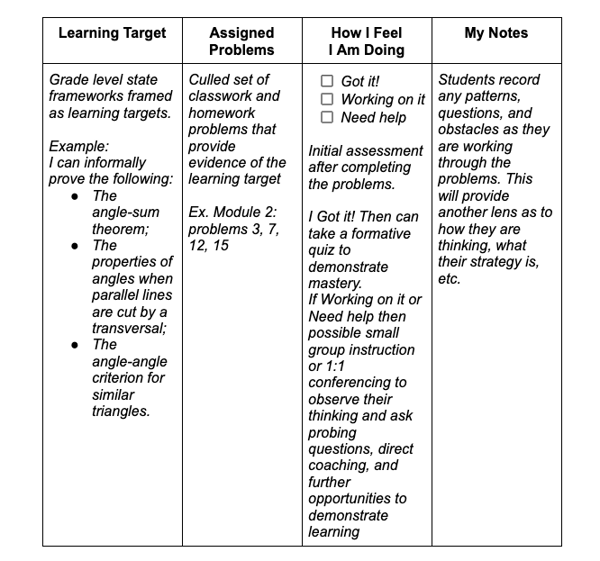
What are you learning from your actions? Every time you act, reality changes. You better understand the quality of an idea by putting ideas out into the world. We do this through observations, testing, or audience reaction.
Sometimes the step you take gets you nearer to what you want and sometimes what you want changes. It is also helpful to enlist your students or 1-2 like-minded colleagues to provide feedback.
How might you build on your idea? You change course as needed to act on what you have learned. And you bring others along to continue to build on what was created.
- How has my understanding changed? Did I learn about what I want?
- How did my empathy connect with others to care about the idea?
- How do I bring other people along where we continually become invested in the idea? What are the next steps I/we might take?
Always take time to celebrate your continued growth and development despite difficult circumstances.
Professional Development for Teachers and Eduplanet21
Eduplanet21 offers robust Professional Learning Institutes from many well-known authors, including Allison. Learn more about our PLUS Institutes for your team!

About the Author:
Allison Zmuda has spent nearly two decades as a full-time education consultant specializing in curriculum, assessment, and instruction. She works with her clients to imagine learning experiences worthy of the pursuit for both students and educators, designing work that’s relevant, meaningful, challenging, and appropriate. Allison is co-author of the book: Students at the Center: Personalized Learning and Habits of Mind (ASCD). She also developed the Habits Personalized PLUS Professional Learning Institute with Eduplanet21.
Blog Subscribe
Popular blogs, blogs by month.
- May 2024 (1)
- April 2024 (2)
- March 2024 (2)
- October 2023 (1)
- August 2023 (1)
- July 2023 (1)
- June 2023 (2)
- May 2023 (4)
- April 2023 (2)
- March 2023 (3)
- February 2023 (2)
- January 2023 (2)
- December 2022 (1)
- November 2022 (1)
- October 2022 (2)
- September 2022 (2)
- August 2022 (2)
- July 2022 (2)
- June 2022 (2)
- May 2022 (3)
- April 2022 (3)
- March 2022 (4)
- February 2022 (3)
- January 2022 (3)
- December 2021 (1)
- November 2021 (4)
- October 2021 (2)
- August 2021 (1)
- June 2021 (3)
- May 2021 (4)
- April 2021 (1)
- November 2020 (3)
- October 2020 (8)
- September 2020 (6)
- August 2020 (7)
- July 2020 (2)
- June 2020 (6)
- May 2020 (9)
- April 2020 (3)
- October 2019 (2)
- September 2019 (1)
- July 2019 (6)
- June 2019 (2)
- May 2019 (4)
- April 2019 (10)
- March 2019 (6)
- February 2019 (1)
- December 2018 (1)
- November 2018 (4)
- October 2018 (14)
- September 2018 (10)
- August 2018 (10)
- July 2018 (2)
- April 2018 (1)
- January 2018 (1)
- December 2017 (1)
- October 2017 (1)
- August 2017 (3)
- June 2017 (1)
- May 2017 (4)
- April 2017 (2)
- March 2017 (3)
- August 2016 (1)
- July 2016 (3)
- April 2016 (1)
- February 2016 (1)
3 Stages of The Understanding by Design® Template
Recap: creating a curriculum leadership team.

Ways to Enhance Personal Growth and Development for Teachers
Hero Images / Getty Images
- Community Involvement
- An Introduction to Teaching
- Tips & Strategies
- Policies & Discipline
- School Administration
- Technology in the Classroom
- Teaching Adult Learners
- Issues In Education
- Teaching Resources
- Becoming A Teacher
- Assessments & Tests
- Elementary Education
- Secondary Education
- Special Education
- Homeschooling
- M.Ed., Educational Administration, Northeastern State University
- B.Ed., Elementary Education, Oklahoma State University
It takes a lot of hard work and dedication to be an effective teacher . Like other careers, there are those who are more natural at it than others. Even those with the most natural teaching ability must put in the time necessary to cultivate their innate talent. Personal growth and development is a critical component that all teachers must embrace in order to maximize their potential.
There are several different ways that a teacher can enhance their personal growth and development. Most teachers will use a combination of these methods to solicit valuable feedback and information that will guide their teaching career. Some teachers may prefer one method over another, but each of the following has been proven to be valuable in their overall development as a teacher .
Advanced Degree
Earning an advanced degree in an area within education is a fantastic way to gain a fresh perspective. It is also an excellent way to learn about the newest educational trends. It provides tremendous networking opportunities, can lead to a pay increase, and allows you to specialize in an area where you may have more interest. Going this route is not for everyone. It can be time-consuming, costly, and sometimes overwhelming as you try to balance the other aspects of your life with those of earning a degree. You must be organized, self-motivated, and adept at multi-tasking to use this as a successful way to improve yourself as a teacher.
Advice/Evaluations from Administrators
Administrators by nature should be excellent resources of advice for teachers. Teachers should not be afraid to seek help from an administrator. It is essential that administrators are accessible for teachers when they need something. Administrators are typically experienced teachers themselves who should be able to provide a wealth of information. Administrators, through teacher evaluations, are able to observe a teacher, identify strengths and weaknesses, and offer suggestions that when followed will lead to improvement. The evaluation process provides natural collaboration where the teacher and administrator can ask questions, exchange ideas, and offer suggestions for improvement.
Experience is perhaps the greatest teacher. No amount of training can truly prepare you for the adversity that a teacher can face in the real world. First year teachers often wonder what they have gotten themselves into over the course of that first year. It can be frustrating and disheartening, but it does become easier. A classroom is a laboratory and teachers are chemists constantly tinkering, experimenting, and mixing things up until they find the right combination that works for them. Each day and year brings about new challenges, but experience allows us to adapt quickly and make changes ensuring that things continue to operate efficiently.
Journaling can provide valuable learning opportunities through self-reflection. It allows you to capture moments in your teaching career that may be beneficial to reference at other points along the way. Journaling does not have to take a lot of your time. 10-15 minutes a day can provide you with a lot of valuable information. Learning opportunities arise almost daily, and journaling allows you to encapsulate these moments, reflect on them at a later time, and make adjustments that can help you become a better teacher.
There is an overabundance of books and periodicals dedicated to teachers. You can find a plethora of terrific books and periodicals to help improve in any area you may struggle with as a teacher. You can also find several books and periodicals that are inspirational and motivational in nature. There are excellent content driven books and periodicals that can challenge how you teach critical concepts. You will probably not agree with every facet of every book or periodical, but most offer sensational tidbits that we can apply to ourselves and to our classrooms. Asking other teachers, talking to administrators, or doing a quick online search can provide you with a good list of must-read literature.
Mentoring Program
Mentoring can be an invaluable tool for professional growth and development. Every young teacher should be paired with a veteran teacher. This relationship can prove to be beneficial for both teachers so long as both sides keep an open mind. Young teachers can lean on a veteran teacher’s experience and knowledge while veteran teachers can gain a fresh perspective and insight into the newest educational trends. A mentoring program provides teachers with a natural support system where they are able to seek feedback and guidance, exchange ideas, and vent at times.
Professional Development Workshops/Conferences
Professional development is a mandatory component of being a teacher. Every state requires teachers to earn a certain number of professional development hours each year. Great professional development can be critical to the overall development of a teacher. Teachers are presented with professional development opportunities covering varying topics throughout the course of each year. Great teachers recognize their weaknesses and attend professional development workshops/conferences to improve these areas. Many teachers commit a portion of their summer to attending professional development workshops/conferences. Workshops/conferences also provide teachers with invaluable networking opportunities that can further enhance their overall growth and improvement.
Social Media
Technology is changing the face of education inside and outside of the classroom. Never before have teachers been able to make the global connections that they are able to make now. Social media such as Twitter , Facebook, Google +, and Pinterest have created a global exchange of ideas and best practices amongst teachers. Personal Learning Networks (PLN) are providing teachers with a new avenue for personal growth and development. These connections provide teachers with a vast array of knowledge and information from other professionals across the globe. Teachers struggling in a particular area are able to ask their PLN for advice. They quickly receive responses with valuable information they can use for improvement.
Teacher-Teacher Observations
Observations should be a two-way street. Doing the observing and being observed are equally valuable learning tools. Teachers should be open to allowing other teachers in their classroom on a regular basis. It is necessary to note that this will not work if either teacher is egotistical or easily offended. Every teacher is different. They all have their individual strengths and weaknesses. During observations, the observing teacher is able to take notes detailing the other teacher’s strength and weaknesses. Later they can sit down together and discuss the observation. This provides a collaborative opportunity for both teachers to grow and improve.
The Internet
The Internet provides unlimited resources to teachers with the click of a mouse. There are millions of lesson plans, activities, and information available online for teachers. Sometimes you have to filter everything to find the highest quality content, but search long enough and you will find what you are looking for. This instant access to resources and content makes teachers better. With the Internet, there is no excuse for failing to provide your students with the highest quality lessons. If you need a supplemental activity for a particular concept, you can find likely find it quickly. Sites like YouTube, Teachers Pay Teachers, and Teaching Channel offer quality educational content that can improve teachers and their classrooms.
- 4 Teaching Philosophy Statement Examples
- Seven Strategies to Provide Help for Teachers
- How School Leaders Can Help Improve Teacher Quality
- Methods of Professional Growth for Teachers
- How to Teach the Teacher Using the Train the Trainer Model
- How Teachers Can Build a Trusting Relationship With Their Principal
- Strategies for Building Confidence in Teachers
- 7 Back to School Tips for Teachers
- What Teachers Should Never Say or Do
- What Teachers Do Beyond the Classroom When No One Is Looking
- Classroom Assessment Best Practices and Applications
- A School Administrator's Guide to Effective Teacher Evaluation
- Building an Effective Plan of Improvement for Teachers
- Teacher Interview Questions and Suggested Answers
- How Principals Can Provide Teacher Support
- 25 Things Every Teacher Wants From Their Stakeholders
K-12 Resources By Teachers, For Teachers Provided by the K-12 Teachers Alliance
- Teaching Strategies
- Classroom Activities
- Classroom Management
- Technology in the Classroom
- Professional Development
- Lesson Plans
- Writing Prompts
- Graduate Programs
A Teacher’s Professional Development Goals
Janelle cox.
- October 23, 2019

As teachers, we all want to grow — that’s why we like to make professional development goals for ourselves. Goals help to keep us in check and lead us to self-improvement. The role of a teacher has many dimensions, and oftentimes it’s easy to get overwhelmed and stressed out. Setting professional development goals can help alleviate some of those negative feelings and make you feel better about yourself and your career. Here are 10 teacher professional development goals that can not only help lead to a pathway of success, but can also help our students.
1. Avoid Teacher Burnout
One of the best ways to avoid that dreaded teacher burnout you hear so many of your colleagues talking about is by taking some time for yourself. For many teachers, this goal is the hardest because teachers are natural born “givers,” and the idea of taking time for yourself seems unrealistic or senseless. However, it is the best way to de-stress , and in order to be a good teacher, you need to take care of yourself first. Try setting a goal to take time out for yourself once a week. You can start small and do something easy like go shopping, take a nap or a walk, or get together with friends. Any time that you take for yourself will lead you to a happier you.
2. Give Students Some Reign
In a traditional classroom, the teacher is always in control, so for many of you, the thought of giving up that control can be a little scary. However, giving your students some control of how they learn can be very beneficial. It gives students a sense of confidence and pride in their work. It also gives them a sense of purpose and motivation. Ease into this goal by giving students a few options to choose from.
3. Integrate Tech Tools
Many teachers have great intentions to use more tech tools but somehow never seem to get around to actually implementing them. If you fall into this category, now is the time to make this goal happen. If your classroom is not privy to a tablet, but you have one at home, bring it in! If you are scared something will happen to it if the students use it, then you can use its mirroring capability, where students will still get the benefits of the tablet without having to physically touch it. The more your students are exposed to technology, the better they will get at using it for their future.
4. Involve Parents More
Every teacher wants to get parents involved more, but oftentimes day-to-day tasks prevent teachers from doing so. Now is the time to invite parents to actively participate in their child’s education. Encourage parents to come in and volunteer. Assign a family project or invite parents to come to classroom events. There are a lot of ways to involve parents more; you just have to make it a priority.
5. Create an Online Presence
Creating an online presence can mean joining in on conversations with your fellow colleagues, creating your own teacher blog, or creating a website with your students. It means that you are actively involved in the tech world and people know you. This is a great goal for teachers who have a hard time integrating educational technology into their daily routine. With technology transforming the way we live, it is important to utilize it.
6. Cultivate Relationships with Colleagues
Some of you may already know this, but for those of you that don’t, cultivating a relationship with your colleagues can have a major impact on your teaching career. These individuals can be your mentors, your friends, or your go-to people when you are in need. Take time to nurture these relationships because these people may turn out to be like family.
7. Incorporate Mindfulness
There has been a growing amount of research about the benefits and effects of being mindful. All you have to do to get started is to be in the present moment, that’s it! Take time to be in the moment. If you are typing an email, have all of your focus on that email. Each time a different thought comes into your mind that isn’t about that email, bring your mind back to what you are currently doing. You can also try being mindful of your breathing. Listen to every inhale and exhale for a few minutes. You will notice your stress level go down.
8. Encourage More Play
You have probably read a lot about the benefits of play and how it’s essential in a child’s development, but maybe you struggle to incorporate it into your daily routine. If you have learning centers that students go to every day, make sure that one center is strictly for play. If you don’t, carve out at least 30 minutes for students to play.
9. Make Learning Fun
Let’s face it, learning can be boring. Make it fun by turning worksheets into games and lessons into experiments. Take learning outside and give your students more choices. Make it your mission to make learning fun each and every day. If you think the lesson is boring, imagine if you were the student who had to do it. Put yourself in your students’ position and think about how you could make it fun.
10. Reflect
Self-reflection can be a powerful tool that can really transform your teaching. Start a journal and reflect upon each lesson and your day. Then find a way to implement positive changes into your lessons. You will find a deeper understanding of not only yourself but also your teaching. This information can only benefit you in your life and career.
- #ProfessionalDevelopment , #TeacherPD
More in Professional Development

Utilizing Canva to Work Smarter Not Harder
Teaching is a balancing act, with constantly juggling creating lesson plans, grading papers,…

Chill Out & Tune In: The Ultimate Summer Guide to Books & the Best Education Podcasts
Summer is the perfect time to unwind and recharge for the upcoming school…

How Sensory Rooms Help Students with Autism Thrive
Students with autism often face challenges in the classroom due to their sensory…

Establishing a Smooth Flow: The Power of Classroom Routines
Learners thrive in environments where there’s structure and familiarity, and implementing classroom routines…
Professional Growth Plans for Educators
Effective school leaders set clear expectations for each teacher’s and administrator’s professional growth plan; as part of that process, they seek feedback from teachers, use data to show impact, and work to build capacity in others, to operationalize high expectations and assesses progress toward those expectations. By using professional growth plans to increase knowledge of content and research-based practices, school leaders are best positioned to support alignment of individual plans with district and school goals. When school leaders set expectations through development and implementation of professional growth plans, they communicate the priority to continuously learn, reflect, and improve teaching and learning.
Tips for Teachers on Creating a Personal Development Plan
- Jason Lange
- Categories : Teaching methods, tips & strategies
- Tags : Teaching methods, tools & strategies
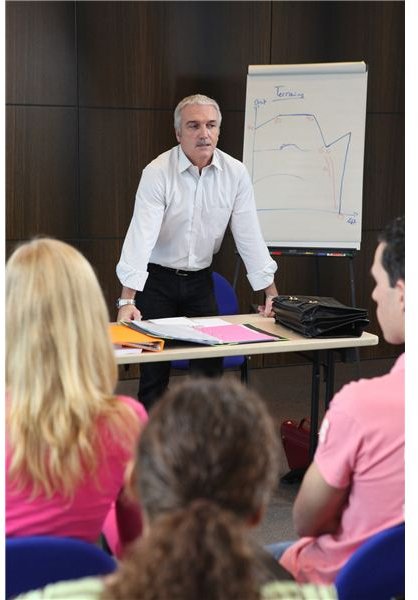
Good teachers know students aren’t created in a factory. They’re not spit out of a machine onto a conveyor belt, the next one exactly like the last. Students have unique personalities and, as a result, individual learning needs and styles.
The same idea applies to teachers. But all too often, they get lumped into one-size-fits-all objectives and assessments that don’t take into account each teacher’s strengths, weaknesses, and goals.
Personal development plans allow you to take control of your own goals by providing you an outlet to set, track, and manage them.
Why You Need One
Unless you believe you have perfected the craft of teaching, there’s always room for improvement. A personalized plan is the best way to help you establish and manage your goals. Here are three reasons you should start on your development plan now:
1. They’re inexpensive and data-driven. Personal development plans can help you focus your attention on making changes based on facts, not perceptions. And they can do this without breaking the bank.
2. They increase your chances of accomplishing your goals. Research shows that writing down your goals makes you significantly more likely to accomplish them. In fact, best-selling author and leadership expert Michael Hyatt says that writing down your goals will, in part, clarify what you want, motivate you to take action, and help you overcome obstacles.
3. They help you make your goals a priority. Humans are inherently bad at accomplishing goals when they’re not tracked and measured. Among lesson plans, grading, and other work and life commitments, it’s easy to let your goals slide if you’re not actively monitoring them.
How to Create Your Plan

Once you’ve decided you need a personal development plan, here are seven tips to help you develop one and stick to it:
1. Reflect on the past. Start by reflecting on your personal and professional practices, strengths, and weaknesses. What do you do on a regular basis? What seems to be working? What are your go-to teaching practices that always work for your students? What areas of your teaching do you feel, if strengthened, would support your students’ growth? Think about times when you grew in your teaching practice, and reflect on how you learn best. Is it working side-by-side with a colleague? Reading a case study? Listening to a webinar and trying those techniques out on your own?
2. Study the facts. Use recent qualitative and quantitative data to see if the facts back up your beliefs. Discard any belief that’s not backed up by concrete data.
3. Focus on core ideas. Instead of trying to tackle everything at once, focus on two or three ideas that you think will help you improve based on your data. How can you leverage your strengths to help you work on your weaknesses? Your selection might be based on what you think is achievable. Larger goals will require significant effort throughout the year. One or two smaller goals can be more easily accomplished and provide a motivation boost to help you tackle your grander goals.
A second approach examines how teaching goals can support one another. Consider clustering goals like maximizing instructional time through clear transitions, delivering clear instructions, and empowering student ownership of routines — all of which complement one another. When achieved, these clustered goals have a significant impact on the classroom climate.
4. Set and measure your goals. For each idea, write down a single goal that begins with an action word, and include a deadline. Determine how you can make your goals SMART: specific, measurable, attainable, relevant, and time-bound.
It’s also critical that you know how you’ll measure your progress. How can you analyze students’ behaviors and progress to indicate that you’ve achieved your instructional goals? If your goal is to build small group discussions into more daily lessons, then how will you measure that specific goal? If you outline and define the necessary data before you begin collecting it, you’re more likely to monitor and evaluate your progress along the way.
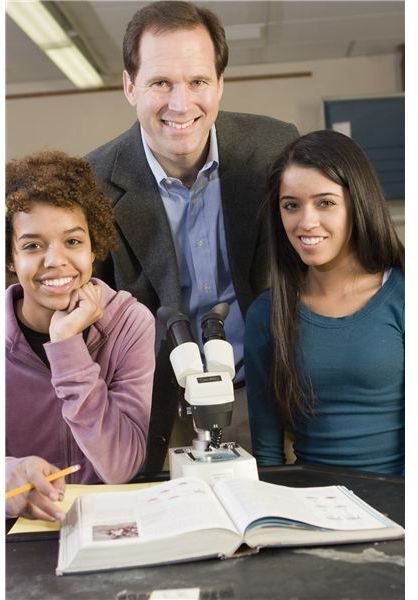
5. Decide what you want to gain. Do you want to read more about a specific topic or develop a new skill? How will you implement what you’ve learned? Set achievable milestones, rather than one immeasurable goal, and monitor your success to help you stay on track.
6. Share your goals. When you develop your goals, share them with a close friend or colleague. In fact, the more friends you share your goals with, the more likely you are to achieve them. Tell your “goal buddies” why your goals are important to you. Share your deadlines to hold yourself accountable. Ask your colleagues to provide feedback to help you stay focused.
7. Reassess your goals. After a few weeks, reassess your goals and progress. Have you achieved them? If so, reward yourself, and move on to another goal. If not, reflect on what worked and what didn’t, and decide whether those goals are right for you.
The best way to ensure lifelong learning is to set specific, achievable goals. But long-term growth can only be achieved through tracking those goals every day and ensuring they’re right for you .
Don’t rely solely on cookie-cutter plans and assessments. Set your own goals and break away from the factory line.
About the Author: Jason Lange is the CEO and co-founder of BloomBoard , a company dedicated to bettering the K-12 education space by providing a marketplace for personalizing educator development. BloomBoard uses the data collected from free observational and evaluation tools to create individualized learning plans and recommendations for teacher growth.

My Professional Growth as a Teacher Essays
Develop teaching expertise is the part of proposition from NBPTS, specifically knowing the subjects they teach and how to teach those subjects to students (1987). One of the methods is continue to pursue their professional development by joining a professional association or organization, attending a workshop, and reading a professional journal, website, or books. These ideas enhance teachers’ cognitive growth by enlarge information of the latest strategies or method, enhance cognitive growth, and learning to help the teachers to become expert in their teaching and influence on student learning. My stage of development would be proficient in all four domains and components of professional practice, however, few domains and components …show more content…
One task I did was to subscribe to The National Association for the Education of Young Children (NAEYC) and Teaching Young Children (TYC). NAEYC focus on the quality of educational and developmental services for all children from birth through age 8. TYC magazine and website mainly focus on preschool teachers who could expand sources on practices, research or ideas to encourage effective teaching. Joining these two associations and magazine helped gain more strategies and ideas I could use in my preschool classroom. After reading the article from TYC magazine, I learned how to welcome children and Families to my classroom by providing well-organized classroom, decorate the walls, display photos of the children and families, offer warm greetings, and learn family’s names before the first day (Vol. 2m No. 5 6-7). I emailed my preschool team about NAEYC and TYC website, which will be a great resource to expand teaching ideas and strategies we can implement in our classroom. I visited National Education Association website that has many information contains latest information from education department, tools and ideas for teachers can use and updates information on the events and grant taking place in education field. I also visited Council for Exceptional Children the website that has many resources on news or issues on and
Explain key influences on personal learning processes of individuals
plan for, monitor and reflect on their professional development. Learners will then be able to investigate and
Personal and professional development Essay
“The most successful nations in the future will be those which develop high quality, skilled and motivated workforces and make good use of them.” Government White Paper (1994)
Future of Education
The differences were connected with a teacher’s original preparation for the teaching profession, licensing in the particular subject area to be taught, strength of the educational experience, and the degree of experience in teaching along with the demonstration of abilities through the National Board Certification, in which all of these facets can be addressed through policy (Darling-Hammond, 2010).America has not produced a national method containing supports and reasons to guarantee that teachers’ are adequately prepared and equipped to teach all children effectively when they first enter into the career of teaching. America also does not have a vast collection of methods available that will maintain the evaluation and continuing development of a teacher’s effectiveness in the classroom, or support decisions about entry into the field of teaching and the continuance in the profession of teaching (Darling-Hammond, 2010). n order to reach the belief that all students will be taught and learn to high standards calls for a makeover in the methods our system of education in order to be a magnet for, train, support or uphold, and cultivate effective teachers in more efficient ways. A makeover that is contingent in a certain degree of how the abilities or skills are comprehended (Darling-Hammond, 2010).In the last few years there has been increasing
Ptlls Theory Assignment 1
Teaching is an extremely important profession as we are responsible for training up the future generations of our community, country and in effect, the world. In order to be a successful and effective teacher there are some basic skills and competencies that one must possess. The experiences that students have inside (and outside) our classrooms, schools and various other institutes will shape and mould their approach to our subjects and to life in general. Therefore, it requires a certain level of skill and training to be deemed professionally fit to enter into this career path and even then, continuous
The Importance Of The National Association For Young Children Or Naeyc
Throughout our career as childhood educators, we observe the significance of the National Association for Young Children or NAEYC. It is recognized as “the nation’s premier organization for early childhood professionals-setting research based standards and providing resources to improve early childhood program quality” (Copple & NAEYC, 2001) for teachers, students, and families. Despite exercising the knowledge of what NAEYC means for our classrooms and the students in them, some may not know who or how the organization was founded. Knowing the background of NAEYC is important because it has a reputable history of providing universities and educators with high quality, researched, information. In order to ascertain a further purpose to why these standards matter and the importance of NAEYC in education, we must learn its history and its founders.
Being A Teaching Assistant Essay
pupil may show signs of losing interest by looking around the room, fidgeting, trying to
Comprehensive Professional Growth Plan
Enhancing the quality of individual teaching skills, which includes putting into practice acquired knowledge or teaching methods
My Professional Growth as an Education Major Essays
Throughout the numerous experiences I have had during my time at Benedictine University, I have learned different lessons and values that will prove important to my teaching career. The different courses, teachers, and schools that I had the opportunity to work with have helped me grow as an educator and provided me with the tools needed in order to be successful.
Professional Knowledge Development
According to the Phases of Professional Knowledge Development transcript “In the declarative stage of knowledge development, the teacher acquires a solid foundation of knowledge about the teaching discipline.” I have

Attaining Expertise Essay examples
In every industry experts are needed to teach others certain skills, give advice, and use strategies to solve problems. Individuals can attain expertise by focusing on a particular skill to improve. It is said that “experts are made and not born,” so expertise is not attained in one day, but takes practice and time and individuals also attain expertise at different rates performance levels. Experts develop cognitive processes that result in their high levels of performance, “Extensive practice can develop expertise in high level skill (Anderson, 2010). Acquired knowledge and skills are needed to attain expertise. This material will discuss
Strengths And Weaknesses Of A Good Teacher
One of the most essential exercises when in comes to professional development as an instructor is to continuously reflect on your perspective, methodology, instruction and behavior within your profession. Doing so ensure that you a growing and improving on teaching skills and building on old strengths to benefit you as an instructor but especially the students that you serve.
My Role As A Teacher Essay
I believe education is one of the most important tools a person can have in life. Every child deserves to receive the best education possible. It has always been my passion to help each child discover their individual God given gifts and talents and to reach their full potential.
Effective Teachers Essay
- 15 Works Cited
Teaching is a profession that is considered to be a rewarding challenging and complex role. An effective teacher does not simply teach knowledge their students and instead aims to arm students with the knowledge, skills, understanding and attitudes that will prepare students for life-long learning. The constructivist theories developed by Piaget and Vygotsky have impacted on the way that teachers teach and this has changed the approach of teaching to place a greater importance on the teacher instead to act as a facilitator of learning in an open, constructivist environment and providing students with the tools to challenge themselves to develop both academically and personally. The education of students within classrooms of today is
Professional Development as a Teacher: Personal Reflection Essay
- 1 Works Cited
Being a teacher is not an easy task as many people could think. To be a teacher does not only imply to know the subject to be taught, it also includes being willing to constantly improve oneself integrally, as much as updating the resources and materials one uses in teaching. Reflecting and analyzing over and over again the best way to teach to learn and how to make students to extend what has been learned. The many hours spend in the classroom will never be enough to plan lessons, prepare materials, review pupils tasks and exams, as well, all the administrative requirements one has to cover for whatever institution we work. Besides all this a good teacher, a professional one, will have to find the time to keep preparing to improve
I Am A Teacher? Essay
Why am I a teacher? When I was a child I always had to pretend play school with my friends and I always had to be the teacher. My mom was a preschool teacher at the local day care center and I grew up seeing her cut bulletin boards and plan lessons. My best friend in middle school 's mom was also a teacher. I never wanted to be anything else and didn 't really have a back up plan if this teaching thing didn 't work out. In this paper I will take you on a journey through my educational years in elementary school and middle school, my time high school, delve into my time in college and then into my career as a teacher.
Related Topics

The Will to Teach
Encouraging Personal Growth: A Guide for Teachers
Education is not just about academic achievements; it’s also about personal growth and development. As educators, it’s important to foster both aspects to ensure holistic development of students. This article explores strategies teachers can use to encourage personal growth alongside academic development.
Understanding Personal Growth and Academic Development
Benefits of encouraging personal growth alongside academic development, strategies for encouraging personal growth alongside academic development.

Personal growth involves developing personal attributes such as self-confidence, resilience, emotional intelligence, and interpersonal skills. Academic development, on the other hand, refers to the acquisition of knowledge and skills related to specific subjects.
Balancing both aspects is crucial for holistic student development. While academic skills can pave the way for career success, personal growth equips students with the emotional and social skills needed to navigate life’s challenges.
Encouraging personal growth alongside academic development offers several benefits:
- Prepares for Life Challenges : Personal growth equips students with the emotional and social skills needed to navigate life’s challenges.
- Promotes Well-being : Personal development can contribute to increased self-esteem and overall well-being.
- Enhances Learning : Personal growth can enhance academic learning by improving skills such as problem-solving , collaboration, and emotional regulation.
- Develops Well-Rounded Individuals : Balancing personal and academic development helps produce well-rounded individuals who are not only knowledgeable but also emotionally and socially competent.
1. Foster a Positive Learning Environment
Create a positive, supportive learning environment that encourages risk-taking, collaboration, and mutual respect.
2. Promote Self-Reflection
Encourage students to reflect on their experiences, emotions, and behaviors. Self-reflection can promote self-awareness and personal growth.
3. Incorporate Social-Emotional Learning
Integrate social-emotional learning (SEL) into your curriculum. SEL can help students develop skills such as emotional regulation, empathy, and interpersonal communication.
4. Provide Constructive Feedback
Provide feedback that not only focuses on academic performance but also on personal attributes and skills. This can motivate students to grow both acadically and personally.
5. Encourage Goal Setting
Guide students to set both academic and personal goals. This can help them understand the importance of balancing personal growth with academic achievement.
6. Model Positive Behavior
Model the behaviors and attitudes that contribute to personal growth, such as resilience, empathy, and respect for diversity.
7. Foster Relationships
Foster supportive relationships among students. Positive peer relationships can contribute to personal growth and social development.
Encouraging personal growth alongside academic development can significantly enhance the educational experience, producing well-rounded individuals who can succeed in all areas of life. By implementing the strategies outlined above, teachers can foster an environment that promotes both personal and academic development, ensuring a balanced, holistic approach to education.
Related Posts
7 simple strategies for strong student-teacher relationships.
Getting to know your students on a personal level is the first step towards building strong relationships. Show genuine interest in their lives outside the classroom.

Connecting Learning to Real-World Contexts: Strategies for Teachers
When students see the relevance of their classroom lessons to their everyday lives, they are more likely to be motivated, engaged, and retain information.

Encouraging Active Involvement in Learning: Strategies for Teachers
Active learning benefits students by improving retention of information, enhancing critical thinking skills, and encouraging a deeper understanding of the subject matter.

Collaborative and Cooperative Learning: A Guide for Teachers
These methods encourage students to work together, share ideas, and actively participate in their education.

Experiential Teaching: Role-Play and Simulations in Teaching
These interactive techniques allow students to immerse themselves in practical, real-world scenarios, thereby deepening their understanding and retention of key concepts.

Project-Based Learning Activities: A Guide for Teachers
Project-Based Learning is a student-centered pedagogy that involves a dynamic approach to teaching, where students explore real-world problems or challenges.
Leave a Reply Cancel reply
Your email address will not be published. Required fields are marked *
Save my name, email, and website in this browser for the next time I comment.

23 Teacher Professional Goals Examples for 2024
There might be affiliate links on this page, which means we get a small commission of anything you buy. As an Amazon Associate we earn from qualifying purchases. Please do your own research before making any online purchase.
As a teacher in 2024, it's important to have clear goals in mind that will help you achieve success in the classroom and positively impact your students.
From improving student achievement, to fostering a growth mindset , the 23 goals listed below will serve as a comprehensive guide for teaching professionals looking to excel in their careers.
Whether you are a seasoned veteran, or just starting out… these goals will help you stay focused, motivated, and effective in your role as an educator. But keep in mind, it is not the goals themselves that will level you up as a teacher .
Instead, it is a combination of the pathway they generate, as well as the effect they have on your students when successfully executed, that will make you a much stronger educator.
By keeping these goals in mind and continuously working every day to achieve them, you will be a completely different person by the end of the year. So, what are we waiting for? Let's dive in!
Table of Contents
What is Teacher Professional Goals?
Teacher professional goals are objectives that teachers set for themselves to ensure they can manage a classroom full of well-rounded students , while improving upon results that could lead to career-defining moments.
These goals are typically aligned and may focus on many different areas – including student achievement, classroom management, instructional strategies, and professional growth.
These specific goals are important as they cross a variety of challenging areas in the classroom, from inclusivity to fostering creativity.
By setting daily, weekly, and monthly checkups for yourself , you will eventually realize that you have achieved many of the goals we lay out below by the end of the school year.
23 Teacher Professional Goals for Success
1. improve student achievement through assessments..
Student assessments are a critical tool for teachers as they can uncover in which areas their students need additional support. This information can then be used to inform what areas of study need to be focused on so students can move the needle on their education.
Teachers should use assessments on a regular basis to make minor or major adjustments to the curriculum in order to continue helping students achieve their goals.
More specifically, having assessments on a weekly or monthly basis can help the teacher gauge whether their students are meeting the goals needed for end-of-year testing.
2. Foster a positive and inclusive classroom culture.
Fostering a positive and inclusive classroom culture is crucial to creating an environment where all students feel valued and supported.
This goal requires teachers to actively work towards developing a welcoming atmosphere that celebrates the diversity of their students and promotes inclusivity.
Fostering positive relationships among students, promoting open communication, and addressing any issues that may arise in a respectful and constructive manner are some of the foundations that building an inclusive classroom is built from.
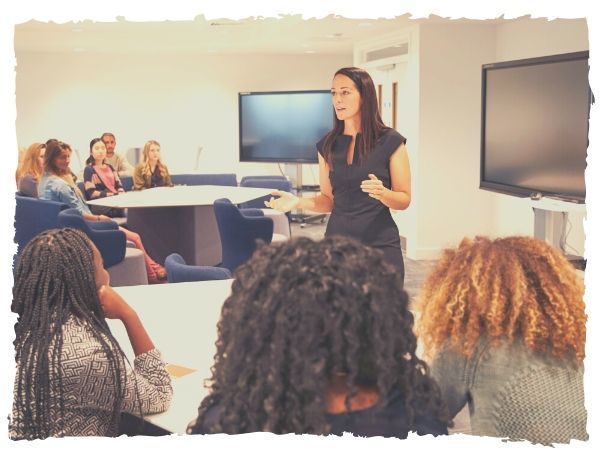
In an inclusive classroom, students should feel comfortable expressing their thoughts and ideas, and teachers should actively engage with all students, encouraging their participation and involvement in class activities.
Teachers can also promote inclusivity by integrating diversity into their curriculum, highlighting different perspectives and cultural experiences, and creating opportunities for students to work collaboratively through a multitude of projects.
By creating a positive and inclusive classroom culture, teachers can help their students feel supported, valued, and empowered to reach their full potential.
3. Utilize technology effectively in teaching.
The modern world is an increasingly tech-filled landscape. Using it effectively, however, is still something that needs to be prioritized, especially as an educator.
While using it can be tremendously advantageous, teachers must set goals when it comes to using technology to create an engaging and dynamic learning experience that supports student growth and development.
Teachers need to be familiar with a suite of software applications that can help them as well as their students better engage with classroom topics. Since many students have different learning styles, these tools can be used to help bridge the gap in disparity among students.
Teachers should also be mindful of the potential drawbacks of technology and ensure that it is used in a manner that enhances rather than detracts from student learning.
This may involve balancing the use of technology with traditional teaching methods and making sure students have access to the necessary resources and support to effectively utilize technology.
4. Implement evidence-based teaching practices.
Evidence-based teaching refers to the use of teaching strategies that have been supported by research and shown to be effective in classrooms across the country.
This requires teachers to stay up to date on all the latest educational research and best practices while being willing to continuously reflect on and refine their teaching methods.
This means that teachers need to be proactive when it comes to seeking out professional development opportunities and engaging in ongoing learning . This may involve attending workshops, conferences, and webinars, as well as participating in collaborative learning communities.
By considering evidence-based teaching practices, teachers can ensure that they are providing their students with the best possible classroom experience and environment.
5. Develop strong relationships with students and families.
Developing strong relationships with the families of your students is a crucial aspect of effective teaching. Teachers that build positive relationships with family members, especially parents, can create a supportive environment that fosters student engagement.
Being approachable, understanding, and empathetic to family needs can go a long distance in setting students up for future success.
Try initiating frequent communications with family members. Keeping your door open and actively listening to their concerns and ideas as well as providing support and resources when needed can prove instrumental for the student.
Teachers can also involve families in the learning experience by hosting events and activities that promote family engagement. Sharing information about their student's progress and achievements is another tried and true method of keeping the family engaged.
6. Foster critical thinking skills and collaborative environments.
Encouraging students to think critically and analyze information for themselves will help them develop the problem-solving skills they need to succeed down the line.
This means teachers should create learning experiences that challenge students to think deeply about some of the concepts they learn in the classroom so they can apply them to the real world.

Using hands-on activities, field trips, discussions, and simulations where there is more room for play will give students the foundation to apply their learned subjects more applicable to the real world through critical thinking.
This extends to group activities like projects that students can collaborate on with their peers. After all, so much of what we do in the real world is driven by collaboration.
7. Continuously grow and develop professionally.
Continuous professional growth and development are essential for teachers looking to stay effective with the changing social and technological shifts that happen in our world.
By attending workshops, conferences, and webinars, as well as participating in collaborative learning communities, teachers can gain skills and use the resources to remain at the top of their profession.
Additionally, evaluating your teaching methods on a regular basis and seeking out feedback from colleagues is a great way to develop professionally. A love of learning and an openness to try something new should be tools in every teacher's toolbox.
8. Encourage student engagement.
Encouraging engagement is one of the best ways you can set your students up for success. With a plethora of distractions ready to take effect in today's world, ensuring positive student engagement with subjects is paramount.
By creating an interactive and hands-on learning environment that gets the students thinking outside of the box about old concepts in new ways, teachers can help foster this positive engagement.
Try incorporating student-led projects into lesson plans and provide opportunities for students to work with real-world materials and technology. Incentivizing students with extra credit can be another effective way to encourage their engagement in a subject.
9. Use the data.
Thanks to the influx of tech tools, “the data” is used everywhere, whether you are in the hospital or in a business meeting. So why shouldn't it be used in the classroom?
Data can provide valuable insights into student strengths and weaknesses, and help teachers make informed decisions about instruction. What subjects are students struggling with and which students are struggling with, what subjects are critical questions that can be solved by looking at the data?
Regularly assessing student performance, analyzing the results, and using the information to inform lesson plans is a workflow that would never have been dreamed up twenty years ago.
Teachers need to have a clear understanding of the data they collect as well as how to interpret it. This may involve using data to differentiate instruction, identify areas where students need additional support, or just adjust teaching methods to better meet the needs of their students.
10. Integrate in-demand skills for the 21st century.
In some ways, the school system is still stuck in the 1950s. But there are opportunities to integrate skills like digital literacy , collaboration, and problem-solving, which are essential for students to thrive in a rapidly changing world.
To integrate these skills into daily lesson plans, teachers need to think outside of the box as well as consider the data on student performance.

Setting some time apart from the regular lesson to teach these skills through short exercises and bringing in guests from the real world to talk to students can be a great way to achieve this.
11. Develop strong classroom management skills.
Strong classroom management can foster a safe, positive, and productive learning environment. Effective classroom management involves creating clear expectations and routines, managing student behavior, and creating a classroom culture that recognizes how students are feeling and meets them there.
Classroom management relies on the teacher understanding their roles and responsibilities as well as executing a strong set of strategies for management.
This may involve using proactive strategies, such as setting clear expectations and routines, as well as reactive strategies, such as redirecting misbehavior or addressing disruptive behavior. Developing these skills can help the teacher support learning and success for all students.
12. Collaborate with colleagues.
Collaborating with colleagues allows teachers to share ideas, resources, and best practices and can lead to improved teaching and student outcomes.
To collaborate effectively, teachers must have strong communication skills, and be open to new ideas and approaches . They should also be proactive in seeking out opportunities to collaborate with their colleagues, and be willing to share their own expertise and experience.
Collaboration can take many different forms, from regular meetings online or in-person to working together on school-wide initiatives or projects.
13. Provide individualized instruction.
Differentiating instruction often involves tailoring teaching methods and materials to meet the individual needs of each student . This is a complicated task because each student varies greatly in their strengths and weaknesses.
To provide individualized instruction, teachers must have a strong understanding of each student's abilities, interests, and learning styles. They should also develop a strong set of teaching strategies and technologies to help each student succeed in the weekly or monthly curriculum.
Teachers can also work to build strong relationships with students and families to better understand what home life is like and, therefore, get better clues on what might aid them in the classroom.
By providing individualized instruction, teachers can ensure that all students can learn and reach their full potential. This can lead to improved student engagement and motivation, and higher student achievement.
14. Foster creativity and innovation.
Encouraging students to think outside the box and embrace new and creative ideas can lead to better subject matter retention. Hands-on learning that gets students off their feet and moving around can be a great way to spark their innate creative talents.
Teachers can do this by creating a supportive and inclusive learning environment that values and encourages creativity , no matter where the child goes with it.
They can also incorporate activities and projects into their lessons that spark creativity and provide opportunities for students to explore their own interests and ideas. This can lead to improved student engagement and motivation, and higher student achievement.
15. Foster a growth mindset in students.
A growth mindset is important for everyone, not just students. Fostering it at a young age can set the child up for success well beyond the classroom.
Developing a growth mindset involves embracing challenges and persevering through difficulties to uncover the hidden potential in one's own talent. By creating a supportive and inclusive learning environment, teachers can get students to take more risks and embrace challenges.
A safe environment that ensures students that everything will be ok if they fail is one of the most crucial things a teacher can create in the learning space. Fostering a growth mindset helps students build up the resilience they will need as they face challenges in life.
Having a growth mindset means embracing challenges as opportunities for learning and growth. If you want to learn more, then take a few minutes to watch this video:
16. Increase attendance.
Are you in a situation in which you're having issues with maintaining student attendance? Before you get mad at the students, try to understand their situation. Some students may have a troubled home life.
Some students may be floating between two homes because their parents are going through a divorce . Some students may just not be motivated or are dealing with an undiagnosed learning disability.
Whatever the reason, you can use different steps to increase attendance by promoting a positive attitude towards school. Establish your own attendance tracking system to see if you notice patterns and trends that are alarming.
Begin by checking out last year's attendance rates and make it a goal to increase it by a certain percentage, such as 10% or 20% for the current year.
When you encourage positive reinforcement in the classroom and reward any student for good attendance, students will feel that their voices are being heard. Then they’ll be more likely to show up on time.
17. Increase reading levels.
If you're trying to increase reading levels, you don't have to rely just on the school curriculum. Encourage students to read as often as possible with tools they prefer.
Give students 5 or 15 minutes of in class time to read their own book or article. Or you can consider reading out loud to students from a book that you're reading at home or a different academic book. Choose a current news article, comic book, academic book, or poetry book to read out loud together as a class.
You can get students to further participate in reading by allowing each student to pick a book, article, or poem that the entire class has to read by the following week, and everyone will get together and discuss it.
18. Increase creative writing opportunities.
Writing is just as important as reading at all levels. You can incorporate writing prompts along with your reading segments. In other words, have students write something related to the book, poem, or article they’re assigned every week.
Allow students to read their writing out loud and have each class discussion around it. You can also encourage students to keep a journal in which you'll give them writing prompts. Collect the journals every week and give supportive feedback to what students write, regardless of how little or how much they write in it.
You can also allow students to provide writing prompts for the class and turn it into a fun or serious activity, depending on the topic.
19. Hire a career coach.
Teaching is your career that you've put a lot of time and effort into. There's nothing wrong with hiring a career coach to move you further along, regardless of how many years you've been in the game. A career coach will help you clarify the career goals you have as a teacher. Maybe you want to remain in the classroom.
Maybe you want to switch over to a different age group. Maybe you want to open an online tutoring school or move to international teaching. A career coach can help walk you through the process to help you achieve such a goal within a realistic amount of time.
If your career goals involve having to achieve a certification, do certain networking, learn a new subject matter, a career coach can give you the tools you need to get started.
20. Encourage peer teaching help.
While you may already be doing collaborative group work and teamwork, you can also take it a step further by encouraging students to teach the class for a certain segment.
You can even make it more structured by having students prepare a short lesson plan around any topic of their choosing, but they have to find a way to work it into the overall class subject.
Give students positive feedback about their particular lesson plan and teaching method. This can encourage more shy students to use their voices and show them how they can teach anything.
21. Incorporate current events into teaching.
Regardless of what subject you teach, you could find a way to incorporate current events into your curriculum. For example, if you're a math teacher, you may want to discuss numbers by talking about how Warren Buffett does stock trading or the percentages in which Bitcoin has risen or fallen for today.
Do you teach history? Try to find something that happened on this day 10, 50 or 200 years ago. You can use different sources ranging from videos, podcasts, and documentaries. You can also create in-class or homework assignments based around current events.
22. Watch other professionals teach.
You can always learn so much from watching other professionals teach. Don't make the mistake of thinking because you're an experienced teacher that you couldn't learn from a new one, or that you can’t learn from a teacher who's been teaching as long as you have.
Different teachers have different methods that can vary based on their personality, culture, and life experience. You can gain a lot from opening up your horizons and seeing how your peers are doing things.
If you don't feel comfortable watching peers at your school, ask to visit another school. Whether it's one at your teaching level or a different one, you can get a better grasp on how different teaching methods work.
23. Invite an observer.
On the flip side, have someone watch you teach . While it can be nerve-wracking when you're being assessed by professional administration, it may not be so nerve-wracking when you're inviting someone in to observe you.
Invite another teacher that you trust and will give an honest opinion. You can also record yourself teaching and send a video to another peer at your school or who works elsewhere.
Final Thoughts on Teacher Professional Goals
Teachers have a major responsibility for the role they play in developing the future pillars of society . As every student is different, and an individual, it is important to meet each child where they are to help them succeed in class. Every student must be treated on a case-by-case basis.
Beyond succeeding in the classroom, fostering a love for challenges and creativity can be an instrumental concept to shape a student's life outside academia . Learning and educating is a lifelong process.
Hopefully, these teacher professional goals examples give you some ideas for what you can do in your own classroom and beyond.
And if you want more SMART goal ideas and examples, be sure to check out these blog posts:
- 10 SMART Goals Examples for an IEP (Individualized Education Program)
- 11 SMART Goals Examples for Special Education Teachers
- 9 SMART Goals Examples for Teachers
Finally, if you want to take your goal-setting efforts to the next level, check out this FREE printable worksheet and a step-by-step process that will help you set effective SMART goals .
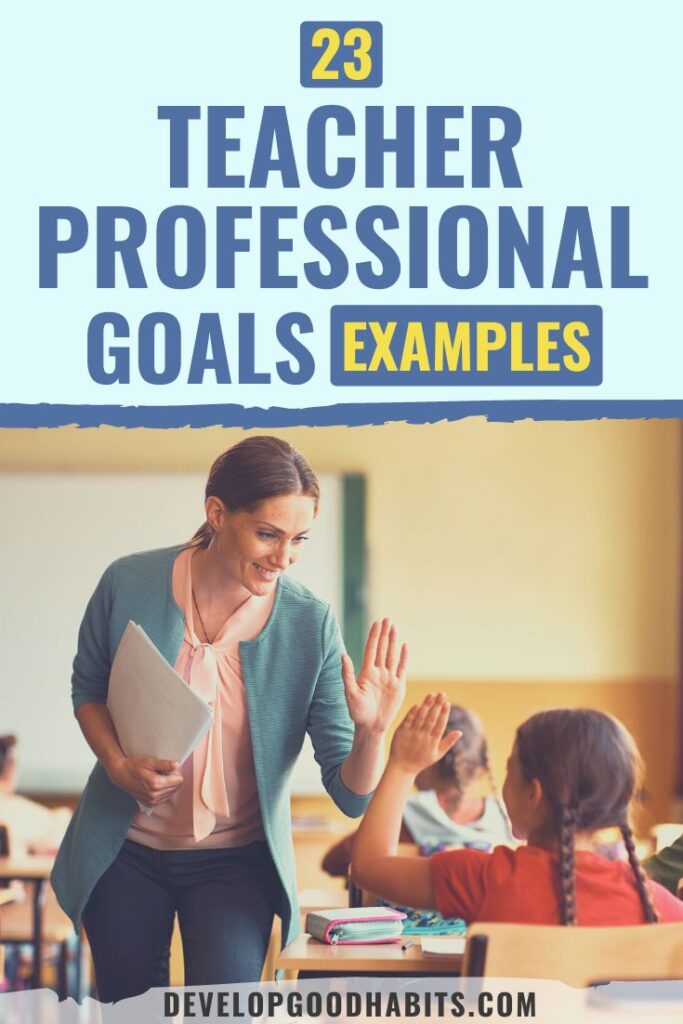
- Our Mission
Taking Control of Your Professional Growth
Teachers can continue learning by assessing their own needs and seeking out resources that are readily available.

We made it through this school year, and educators are taking a collective deep and well-deserved breath. Our recovery will take time, but it will allow us to build bridges between past practices and new educational visions. The first step: let go of what didn’t work and proactively pivot toward learning that ignites curiosity. If we want our students to be active learners, critical consumers, real-world connectors, and innovative creators, we should seek out learning opportunities that are tailored to meet our needs.
With so many professional learning mandates handed down by schools, districts, and states, finding ways as educators to take some control of this process can help make professional learning personal.
3 Ways to Seek Out Professional Learning
1. Navigate the #EduTwitter space. Twitter is a powerful vehicle for growing your professional learning network and is one-stop shopping for your educational needs.
- Join a Twitter chat. It’s usually pretty easy to find educators chatting about topics you’re interested in. The cross-pollination of ideas and resources shared can be a powerful catalyst of cultivating connections and bringing new ideas that will impact student learning to fruition. We personally enjoy #CultureEd, #FutureReady, #G2Great, #Empathetic_Educators, #Satchat, #TLap, #CrazyPLN, #EducationNeverDies, and #Read2Lead (just to name a few).
- Find colleagues outside of your network to be thought partners. Scroll through the chat hashtags to revisit the learning that transpired. Don’t be afraid to directly message the educators who participated. This can build connections, foster collaborations, and continue the conversation.
- Stay up-to-date on education trends. Twitter is a great space to find out about other professional learning opportunities, new books, podcasts, and current professional resources.
2. Read professional books, articles, and blog posts. Gather to discuss professional texts within your organization. Having a shared experience can improve instructional practices, connect theory with practice, and strengthen the communication of a vision and specific initiatives.
- Select a focus for your book choices, and generate targeted questions to guide and deepen your conversations.
- Request a time to share out during staff meetings about the learning from your book group. If you make this a regular practice, you can shift staff meetings to focus on professional learning.
- Invite the author to be part of your discussion. Most authors are very accessible and can be reached on a variety of social media platforms.
- Participate in a self-paced Voxer book study to connect with educators outside of your local network. Learn about, from, and with people who come with varied experiences and perspectives.
3. Listen to podcasts. This is convenient professional learning on the go. Listening to various people share learning and have critical conversations can influence, confirm, and shift your thinking while you exercise, wait in line at a store, or commute back and forth.
- Figure out your podcast goal. What is it that you want to learn from listening? Do you want to laugh as you reflect? Are you seeking multiple voices and perspectives? Find shows that meet your needs.
- Speed it up or slow it down. The beauty of a podcast is that you can make it the pace you need.
- Connect with others who are interested in similar topics. After listening, be sure to comment on the podcaster’s social media. Connect with them and continue the conversation with others online.
Explore podcasts that will pique your interests, spark new ideas, and push your thinking. Here are some we enjoy:
The Innovator’s Mindset (George Couros)
Future Ready (Thomas C. Murray)
Lemonade Learning (Brianna Hodges and Lainie Rowell)
Teach Better Talk (Jeff Gargas and Rae Hughart)
The Cult of Pedagogy (Jennifer Gonzalez)
Teachers on Fire (Tim Cavey)
Rethinking Learning (Barbara Bray)
The Dave Burgess Show
The Principal Liner Notes (Sean Gaillard)
The Adam Welcome Podcast
The Staffroom Podcast (Chey and Pav)
10 Minute Teacher Podcas t (Vicki Davis)
Dare to Lead (Brené Brown)
The Dr. Will Show (Will Deyamport)
EduMagic: A Podcast for Future Teachers (Sam Fecich)
ThriveInEdu (Rachelle Dene Poth)
If you can’t find it, create it: Invite others in your region to a local edcamp. The greatest knowledge in the room is the room. Sessions are developed on the day of the edcamp by educators who want to explore specific topics. Attendees can visit various rooms based on their learning needs, feel supported by others, and share out about topics. This enables all of the participants to share their experiences and be both facilitators and learners in the same flexible space. You can apply to host an official edcamp in your area and get help with the entire process.
Now is the time to be in the driver’s seat of your own professional learning. We no longer have to wait for professional learning to come to us. We owe it to ourselves to choose how, when, and what we want to learn.
What Are Your Top Professional Goals as a Teacher?

Ready, Set, Goals!
Professional Goals for Teachers [Ideas, Tips & Examples]
What are your top goals as a teacher? For most educators, the list probably starts with making the most meaningful difference in the lives of your students.
Of course, there are many other professional goals shared by teachers across all grade levels and disciplines.
However, amid the demands of running classrooms and teaching those inquisitive — and, yes, often distracted — young minds, it can be difficult to find a quiet moment or two to reflect on personal and/or professional goals that might be very important to you as a teacher.
10 Professional Development Goals for Teachers
1. Becoming a Better Teacher
Top teachers understand that embracing “lifelong learning” applies to educators as well as the students. This means fueling your desire to improve throughout your teaching career, through your reading and research (such as these tips on teacher preparation and planning ), as well as through teacher workshops and other opportunities.
One of the best ways to continue improving your knowledge and skills is to regularly complete educator professional development courses and programs. A great way to keep up with new trends and teaching strategies, professional development courses are available on hundreds of important topics, including:
- Classroom Management
- Reading and Literacy
- Technology in Education
- Bullying Prevention
- And many, many more
2. integrating technology in the classroom
Of course, technology permeates our lives in countless ways, with most modern students glued to a screen for a big chunk of each day. Fighting technology is, of course, futile; finding valuable ways to incorporate it into your classroom can make a big difference for your students.
Want to excel in your field? Dive into our range of Education courses! >
Some teachers are finding success using such tech teaching strategies as podcasting or engaging students and parents alike with a classroom website. The article “10 Ways to Use Technology in the Classroom” references such tools as Flipgrid and Google Classroom , a free web service used by an estimated 30 million teachers and students. Google Classroom is designed to help teachers more efficiently create, distribute and grade assignments, boost collaboration, offer instant feedback and foster seamless communication, all in an easy-to-use, paperless format. For teachers who find the Google’s G Suite for Education useful, there is also the option of becoming a Google Certified Educator .
3. Advocating for Continuous Lifelong Learning
Since most educators are also passionate lifelong learners, they understand the importance of instilling that “lifelong learning” ethos in the hearts and minds of their students as well. This is easier said than done, of course, but it helps to stay mindful of these themes:
- Mentoring students’ intellects by helping them develop problem-solving, critical- and creative-thinking skills
- Helping them find and hone their voice by working on developing communication skills and confidence in expressing themselves
- Inspiring students by demonstrating your belief in their abilities and providing the support they need to succeed in their academic challenges
Read about additional strategies in “8 Lesson Plans to Promote Lifelong Learning.”
4. Earning National Board Certification
Earning certification as a National Board Certified Teacher through the National Board for Professional Teaching Standards (NBPTS) is a rigorous and expensive process. But according to the organization, “The evidence is clear. Board-certified teachers positively impact student learning.”
NBPTS describes the program as an “opportunity to connect professional learning with classroom practice (that) brings to life a teacher’s experience, helping them reflect on individual student learning needs” ( see video ).
The National Board embraces five core propositions regarding “what accomplished teachers should know and be able to do to have a positive impact on student learning.”
- Teachers are committed to students and their learning.
- Teachers know the subjects they teach and how to teach those subjects to students.
- Teachers are responsible for managing and monitoring student learning.
- Teachers think systematically about their practice and learn from experience.
- Teachers are members of learning communities.
For one educator’s perspective on why earning NBPTS certification was “totally worth it,” check out Cult of Pedagogy education blogger Jennifer Gonzalez’s report on “Conquering National Board Certification.”
5. Sharpening Your Presentation Skills
Do you use tools like PowerPoint or Keynote to create slide educational presentations? Many teachers do, but the majority are probably no masters of this technology. Jennifer Gonzalez also draws on personal teaching experience to advocate for powering up your PowerPoint and overall presentation skills by reviewing the principles espoused in the book “Presentation Zen: Simple Ideas on Presentation Design and Delivery” ( see video ).
Key principles of “Presentation Zen” include:
- Limit text on slides: “Your slides are meant to supplement your talk, not provide all the content. If you stick to just a few words per slide – the most important ones – you’ll be forced to speak to your audience , which will be so much more engaging for them.” Additional details can be provided on a handout and perhaps assigned as reading. If your presentation is compelling, students will be more motivated to read more.
- Make it visual: “Images are incredibly powerful for making a point and strengthening cognitive processing. Anytime you can represent an idea visually, rather than just in text, your slides will actually be helping your students remember the concepts better.” Author Garr Reynolds elaborates in his “Presentation Zen” TEDx Talk .
- Tell a story: “Your overall message will stick much better if it’s told as a story. This may be challenging at first, but once you make the decision to find the story in the content, you may be surprised.”
5 REASONS WHY CONTINUING EDUCATION MATTERS FOR EDUCATORS
The education industry is always changing and evolving, perhaps now more than ever. Learn how you can be prepared by downloading our eBook.
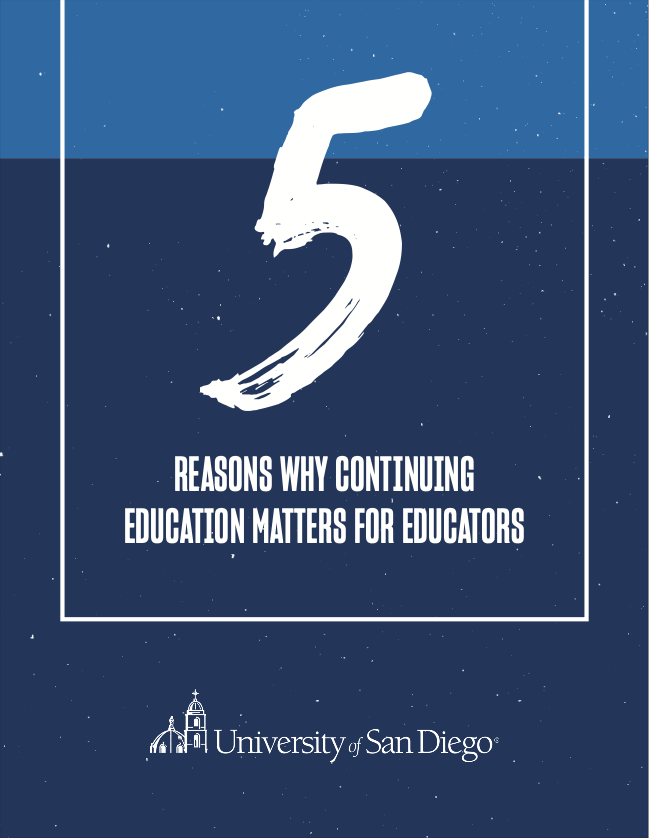
6. Improving Classroom Management
Are your students consistently well-behaved, orderly and attentive? The answer to this question varies greatly among classroom teachers, and the methods for improving classroom management are of great interest to teachers of all grade levels and subject matter. After all, creating a more organized classroom can boost student engagement while reducing teacher stress.
Ready to take your expertise to the next level? Explore our Classroom Management certificate program now! >
Thoughtco.com offers several useful classroom management tips and suggests that the start of a new school year is the ideal time to implement any changes you may be considering. Tips include:
- Utilize a time management tool
- Use color-coding for visual organization
- Implement a homework checklist and/or homework contract
Online courses on classroom management are another highly effective way to treat yourself to a fresh look at your organizational habits and find room for improvement.
7. Expanding the Role of Parents
There are many well-documented benefits to getting parents more involved in the education of their children, and no shortage of strategies for making it happen. These include:
- Emphasizing an open-door policy
- Encouraging parents to come in and volunteer
- Assigning a family project
- Inviting parents to come to a Fun Friday event
- Assigning homework that includes family participation
- Using technology like podcasts or a website to connect parents to the classroom
The list of benefits is long and, according to LearningLiftoff.com , applies to parents, teachers and schools, as well as to the students themselves:
- Higher grades and test scores, enrollment in more advanced programs
- Better school attendance and homework completion rates
- Improved social skills and behavior
- Increased self-esteem
- Higher likelihood of graduation and advancement to post-secondary education
8. Finding a Mentor
Schools that have formal mentoring programs that pair veteran teachers with less-experienced counterparts have multiple benefits for both parties. Whether or not your school operates a formal mentoring program, you can always:
- Reach out to a more experienced colleague if you are new to teaching
- Offer a helping hand and an open ear to a younger colleague, if you have some experience under your belt
Learn more about strategies for and benefits of mentoring in the Schoolology.com post, “The Benefits & Importance of Educational Mentoring.” Beyond mentoring, per se, cultivating relationships with your teaching colleagues creates opportunities to learn from each other’s experiences, to serve as professional support networks and to increase in-school camaraderie while also developing friendships.
9. Adjusting Your Mindset
Do you dread certain aspects of your job, or are you excited and motivated to head off to school each day? Your mindset has “a powerful impact on how you experience your work and whether or not you continue to grow and thrive,” Jennifer Gonzalez writes in “Goal-Setting for Teachers: 8 Paths to Self-Improvement.”
She notes that reading is a great way to cultivate a healthy mindset, and recommends several books including “Awakened: Change Your Mindset to Transform Your Teaching” and “Unshakeable: 20 Ways to Enjoy Teaching Every Day … No Matter What.”
Mindfulness is also championed by TeachHub.com in a post titled “A Teacher’s Professional Development Goals,” which suggests that focused breathing and intentioned awareness can help teachers, or professionals in any field, push out distractions and free the mind to focus fully on the task or matter at hand.
10. Taking Professional Development Courses
As a teacher, you spend many of your waking hours teaching courses — perhaps it’s time to consider taking one for a change. Educators regularly take professional development courses for a wide range of reasons, including some that connect directly to achieving the goals discussed above. Motivations include staying up to date on new teaching trends and strategies, positioning yourself for salary advancement or career opportunities, or simply following a particular passion or interest to expand your mind.
Plus, it’s easier than ever to do so now that more educational institutions are offering such learning opportunities online to provide greater scheduling flexibility for busy working teachers.
For example, the University of San Diego’s Division of Professional and Continuing Education offers hundreds of high-quality courses and certificate programs designed to motivate teachers, enhance instruction and stimulate student learning. Here are just a few of the topics:
- Beginning Teachers
- Educational Leadership
- Special Education
- English as a Second Language
- Multicultural Studies
- of Language
Courses are taught by dedicated, experienced, engaging instructors, including many from the USD faculty. The university offers so many options that you are sure to find opportunities for professional growth that align with your interests and passions as an educator.
Discover Continuing Education Courses for Teachers at USD >>
Curriculum covered in this article
Be sure to share this article.
- Share on Twitter
- Share on Facebook
- Share on LinkedIn
Your Salary
Browse over 500+ educator courses and numerous certificates to enhance your curriculum and earn credit toward salary advancement.
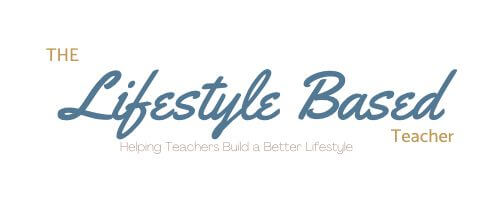
The Lifestyle Based Teacher
helping teachers build a better lifestyle
3 Inspiring End-of-Year Teacher Reflection Examples That Hit the Mark
As the school year ends, there are many things to do. You need to add an end-of-year teacher reflection to your end-of-year routine that helps you reflect on this year and create a plan for the following year. Because I love helping teachers everywhere simplify their teaching tasks so they can enjoy more life, these end-of-year teacher reflection examples will help you know exactly how to take this year’s challenges and turn them into wins for the next year!
If you found yourself struggling this year with finding the time you need to spend with family, take care of yourself, and live your life outside of teaching, fgrab a copy of my 5 Teacher Time Management Secrets to Leave Work at Work so you can finally spend your upcoming school year the way you want! Download your copy here .
Read on to learn more about the end-of-year teacher reflection examples that will help you get a head start on your year next year!

End of Year Teacher Reflection Example 1
The 10-minute reflection .
Take a few moments with your favorite notebook and best pen and write down one or two things from each school year month, including ups and downs.
Set a timer for 3 minutes and try not to overthink how good or bad each was but instead get it all out on paper.
Once you have everything down, you can look back and see what came out of your year. Take 2 minutes to reflect on each and process how the year went.
Then take 5 minutes to plan for what you will continue to do next year, what you will stop doing, and what you must think about before deciding.
End of Year Teacher Reflection Example 2
The conversation .
As you did in the 10-minute reflection, take 3 minutes to write out all you can about your year.
Find a time to speak with a trusted colleague or administrator about what you wrote down. Ask them for feedback or insight to get a different perspective on what you experienced. They may have another way of seeing something that seemed challenging then and help you see how it was a learning experience for you.
Take the insight you gained and bring it back to your notebook. Use the opportunity to journal how you can use the year’s challenges as learning experiences to help you plan your instruction differently, prep your lessons in less time, deliver your education creatively, or have another inspiring idea!
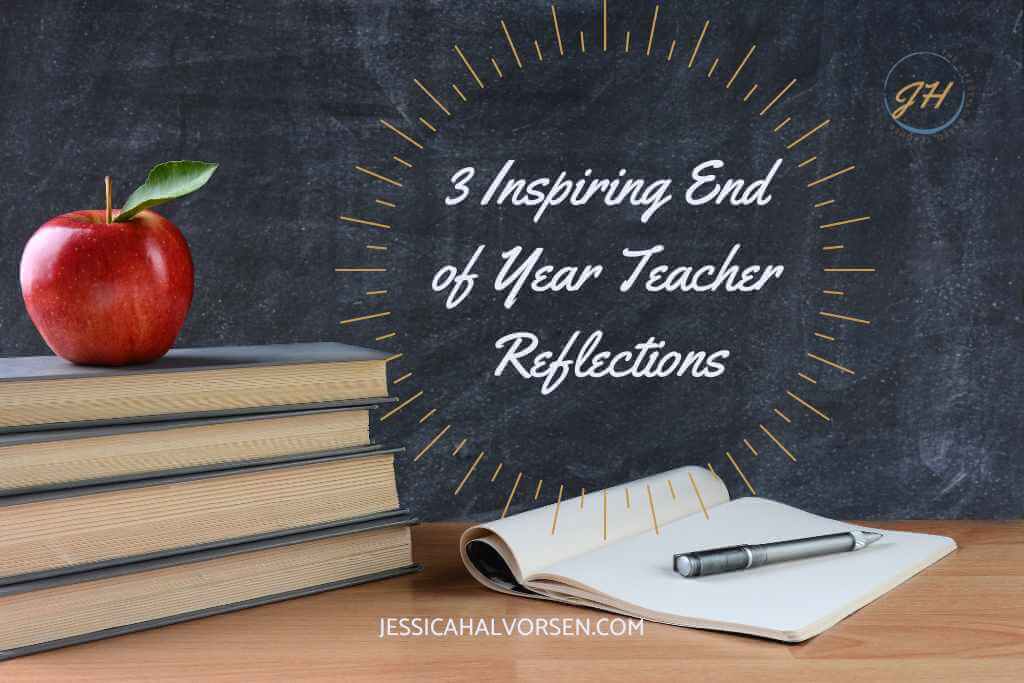
End of Year Teaching Reflection Example 3
The ask .
If you can, send a letter to families or ask your students a few questions about how they felt the year went for them. Know that what is written is only one person’s opinion, and don’t be too harsh on yourself if there is negative feedback.
Here are some examples for students
- What are you most proud of accomplishing this year?
- Where did you encounter struggles today, and what did you do to deal with them?
- What about your thinking, learning, or work today brought you the most satisfaction?
Here are some examples for parents
- What growth have you seen in your student this year? What do you think contributed to that growth?
- Where did you see your student struggle? What do you think would have helped them to overcome the struggle?
Take a few minutes with the feedback and choose 3 things to modify, grow or change for the upcoming school year.
More Examples of End of the Year Teacher Reflections
Teacher End of Year Reflection: A Year of Growth and Change (blog)
Why Teacher Reflection is an Educator’s End-of-Year Secret Weapon (article)
END OF YEAR MUST DO: TEACHER, STUDENT, AND PARENT REFLECTIONS (blog)
10 fun ways to reflect on your teaching (Video)
Go Forth and Reflect
End-of-the-year teacher reflections are a necessary part of teaching to help you learn and grow as you continue year after year. No matter how many years you have been in the classroom, there are always things that can be shifted, improved, or changed to help to make your teaching and life better.
As lifelong learners, teachers are always finding ways to improve, especially in time management. In addition to the 3 Inspiring End of Year Teacher Reflection Examples, you can learn how to keep teaching in the classroom and enjoy a lifestyle you love with the 5 Teacher Time Management Secrets to Leave Work at Work.

Recommended Articles
3 easy steps to back-to-school planning, 3 simple ways to cure spring fever in the classroom, 7 tips to more confidently balancing teaching and family, create a sustainable summer teacher self-care plan to carry into the year.

5 Teacher Time Management Secrets to Leave Work at Work
Enter your info and we’ll send it straight to your inbox!
Academia.edu no longer supports Internet Explorer.
To browse Academia.edu and the wider internet faster and more securely, please take a few seconds to upgrade your browser .
Enter the email address you signed up with and we'll email you a reset link.
- We're Hiring!
- Help Center

IQMS …. Personal Growth Plans and Developmental Needs of Educators SACE Mini-Seminar

Related Papers
Res Militaris
THULANI Simelane
The primary purpose of this study was to explore the continuing teacher development challenges with specific reference to Mpumalanga province in South Africa. A total of ten (10) school principals from primary, secondary and combined schools participated in the study. The participants were selected using the convenience sampling method, considering their distance, knowledge base and desire to contribute to the study. The study was qualitative using the interpretivism philosophy. Data were collected through semi-structured interviews employing open-ended questions. Data were analysed using the NVIVO data analysis software. The findings revealed some blind-spot challenges teachers face during and after continuing teacher development sessions that policymakers could not identify. The study recommended the need for tertiary intuitions to introduce professional development as a study programme, CPTD userfriendly software, and the government should allow early retirement without penalties on a pension for senior teachers as well as linking principals' promotion to professional development.
Tsediso Makoelle
Sue Westraad
Bulgarian Comparative Education Society
Vimbi Mahlangu
Zenodo (CERN European Organization for Nuclear Research)
peter nsibande
Bongi Nkabinde
IJASS JOURNAL
The Botswana Education and Training Sector Strategic Plan (ETSSP 2015-2020) marks a significant milestone in our collective efforts as a nation to bring about a more diversified, knowledge-based economy. Through a planned and careful development of human capital, the ETSSP seeks to refocus our education and training towards fulfilment of social and economic aspirations identified in our Revised National Policy on Education (RNPE), the National Development Plan, Vision 2016 and as well as the Millennium Development Goals.The ETSSP serves to address poor levels of performance across the sector, through quality changes and improving the curriculum; improving teaching and learning at all levels and undertaking intensive teacher development (training); developing appropriate assessment patterns through setting up a National Assessment Framework to better organize school-based assessment and measuring skills and linking with national assessment.In this study, readiness of primary schools teachers in implementing OutcomeBased Education (OBE) and Outcome Based Assessment (OBA)was assessed in South East regionin Botswana. Surveydesign using a questionnaire was conducted with 480 primary school teachers from the four inspectorate areas of the region. Results show that teachers at this level are not trained to implement OBE nor OBA. Recommendation on expedited training on these is made.
Mediterranean Journal of Social Sciences
Robert Cameron
The focus of this paper is on the management and governance of education at provincial level – specifically on efforts to introduce performance management into education by the Western Cape Education Department (WCED), and their impact. Post-1994 the WCED inherited a bureaucracy that was well placed to manage the province’s large public education system. Subsequently, irrespective of which political party has been in power, the WCED consistently has sought to implement performance management. This paper explores to what extent determined, top-down efforts, led by the public sector, can improve dismal educational performance.The paper concludes that the WCED is (and long has been) a relatively well-run public bureaucracy. However, the sustained, determined efforts to strengthen the operation of the WCED’s bureaucracy have not translated into systematic improvements in schools in poorer areas. One possible implication is that efforts to strengthen hierarchy might usefully be complemented with additional effort to support more horizontal, peer-to-peer governance at the school level.
Sa Journal of Human Resource Management
Willem Schurink
Loading Preview
Sorry, preview is currently unavailable. You can download the paper by clicking the button above.
RELATED PAPERS
SA Journal of Human Resource Management
Trevor de Waal
Business Ethics and Leadership
Beauty Zindi
Sr Airtickets
Dominique Botha
Harold Maphoto
mkateko maluleke , Raymond Maluleke
Roelien Herholdt
Maurice Amutabi
South African Journal of Education
Makobo Mogale , mpho modipane
Victor Ngwenya
PUBLIC SERVICE ACCOUNTABILITY MONITOR
aadcice.hiroshima-u.ac.jp
Chika Sehoole
Kenton Special Edition
Aslam Fataar
mkateko maluleke
otilia Chiramba
Journal of Educational and Social Research
School Leadership & Management
Catherine Ward
INTERNATIONAL JOURNAL OF EDUCATIONAL SCIENCES
Joseph Ramathibela Maimane
The Swedish Journal of Scientific Research (SJSR)
japheth dastan
Fanie Cloete
South African Journal of Childhood Education
Keshni Bipath
Koers - Bulletin for Christian Scholarship
Pierre du Plessis
- We're Hiring!
- Help Center
- Find new research papers in:
- Health Sciences
- Earth Sciences
- Cognitive Science
- Mathematics
- Computer Science
- Academia ©2024
48 Personal Growth Essay Topic Ideas & Examples
🏆 best personal growth topic ideas & essay examples, 📝 most interesting personal growth topics to write about, 👍 simple & easy personal growth essay titles.
- Personal Growth and Development From a personal perspective, the strategy I intend to use to address the issue of diversity in the workplace is to be open-minded and willing to listen to others before making judgments.
- Student’s Personal Growth: University Experiences The chosen data collection method was the semi-structured interview, as this method enables the researcher to elicit a lot of information and encourage the participants to share their views freely.
- Effective Leadership: Character and Personal Growth In turn, this will ensure that the leader has an open mind and is accommodating to the different personalities of the followers.
- The Role of Music in Personal Growth I believed that someday I would graduate from school, then I would do my best to have a degree in the field that interests me the most and pursue the career that will make me […]
- Multispecies Ethnography and Personality Growth Politics became the determinant element to the determination of biodiversity protection, but the majority of the leaders focused on the essence of power.
- Stress Impact on Self-Esteam and Personal Growth The causes of stress in Jennifer’s life and its possible effect on her health number of factors can be regarded as causing stress in Jennifer’s life.
- Growth and Motivation Theories: Application in Personal Behavior, Professional Goal Setting, Social Policy Formulation Maslow’s Hierarchy of Needs Theory of Growth Maslow’s hierarchy of needs growth theory states that, an individual has needs that need to be fulfilled at various levels for the individual to achieve personal and professional […]
- Achieving Personal and Professional Development
- Relations Between Accept and Personal Growth
- Personal Growth in the Book “Great Expectations”
- Importance of Personal Development and Self-Assessment Exercises
- Blueprint for Professional and Personal Growth
- The Usefulness of Self-Assessment Tools for Personal Growth
- Coping With Childbirth: Brain Structural Associations of Personal Growth Initiative
- Grief After Suicide: A Health Perspective on Needs, Effective Help, and Personal Growth
- The Relationships Between Emotional Intelligence and Personal Growth
- Personal Growth and Happiness: Positive Psychology
- Five-Year Personal Growth Plan Overview
- From Childhood to Adulthood: Emotional and Physical Changes
- The Attributes That Complement Professional and Personal Growth
- Human Services Theory: Guidance for Personal Growth
- The Relationships Between Journeys Involve New Experiences and Personal Growth
- Learning and Personal Growth for Students of Poverty
- Volunteering and Sacrificing as a Pathway to Personal Growth
- Differences Between Nursing, Creativity, Self Care, and Personal Growth
- Importance of the Personal Growth in Career Development of Managers and Employees
- Personal Growth and Development: Behavioral Therapy
- Achieving Personal Growth From Teaching Practice
- Overview of Personal Growth and Preparation for Future Goals
- Personal Growth Development and Multiple Intelligences Analysis
- Importance of the Personal Growth for Women
- Personal Growth Initiative and Social Support Overview
- Analysis of the Plan for Professional and Personal Growth
- Promoting Personal Growth Through Experiential Learning
- What Children Can Teach Us About Risk, Failure, and Personal Growth
- Achieving Human Potential Through Self-Actualization
- Personal Growth, Self-Care, and Creativity in the Nursing Profession
- Revisiting the Organismic Valuing Process Theory of Personal Growth
- The Ladder of Sustainable Personal Growth and Its Steps
- Personal and Professional Growth Requirements in Relation to the NMC Regulation
- Supporting Personal Growth and Skill Development
- What Can Time Management Bring to Your Personal Growth
- Personal Growth Through Learning Overview
- Working for Personal Growth and Development
- The Importance of Personal Growth Within the Group
- How Young People Use New Media for Community Action and Personal Growth
- The Relationships Between Personal Growth and Development of Romanticism
- Self Esteem Research Ideas
- Positive Psychology Titles
- Cognitive Psychology Topics
- Emotional Development Questions
- Psychology Questions
- Talent Management Questions
- Leadership Development Essay Titles
- Leadership Qualities Research Ideas
- Chicago (A-D)
- Chicago (N-B)
IvyPanda. (2023, September 27). 48 Personal Growth Essay Topic Ideas & Examples. https://ivypanda.com/essays/topic/personal-growth-essay-topics/
"48 Personal Growth Essay Topic Ideas & Examples." IvyPanda , 27 Sept. 2023, ivypanda.com/essays/topic/personal-growth-essay-topics/.
IvyPanda . (2023) '48 Personal Growth Essay Topic Ideas & Examples'. 27 September.
IvyPanda . 2023. "48 Personal Growth Essay Topic Ideas & Examples." September 27, 2023. https://ivypanda.com/essays/topic/personal-growth-essay-topics/.
1. IvyPanda . "48 Personal Growth Essay Topic Ideas & Examples." September 27, 2023. https://ivypanda.com/essays/topic/personal-growth-essay-topics/.
Bibliography
IvyPanda . "48 Personal Growth Essay Topic Ideas & Examples." September 27, 2023. https://ivypanda.com/essays/topic/personal-growth-essay-topics/.

IMAGES
VIDEO
COMMENTS
My Personal Development Plan as a Future Teacher. Topics: Personality Development, Teaching Words: 1968 Pages: 7. Being a teacher has always been my dream. Being a teacher who makes a difference, I believe, is my goal. That is precisely the reason why I pursue studies in becoming an effective teacher. Professionally, I am aware that teachers ...
Introduction. As a dedicated teacher who strives to improve the teaching profession, I have implemented various initiatives to positively impact my peers, such as conducting peer observations and serving as a mentor teacher for beginners; therefore, I believe I would be an ideal candidate to write an essay about a teacher of the year and this profession in general.
Step 3: Create a plan to implement the goal. Once teachers have set a SMART goal, they can create a road map to outline the actionable steps that will help them achieve the goal. Teachers may question what essential features to include in a PD plan. A comprehensive plan includes: Active learning.
Personal Growth as Professional Development for Teachers. By. Allison Zmuda. February 22, 2022. Blog. When your cognitive and emotional batteries are running low, recharge by taking a genuine rest and take on a small design challenge to re-energize you and your students/colleagues. You may not immediately consider personal growth activities as ...
teachers in general, this would require a shift in pedagogical practices that may be difficult to implement and sustain. This paper describes the approaches undertaken in two case study schools, the changes required in teachers' pedagogy to enact the approach, and the professional growth experienced by the teachers as a result of this enactment.
Personal Learning Networks (PLN) are providing teachers with a new avenue for personal growth and development. These connections provide teachers with a vast array of knowledge and information from other professionals across the globe. Teachers struggling in a particular area are able to ask their PLN for advice.
Here are 10 teacher professional development goals that can not only help lead to a pathway of success, but can also help our students. 1. Avoid Teacher Burnout. One of the best ways to avoid that dreaded teacher burnout you hear so many of your colleagues talking about is by taking some time for yourself. For many teachers, this goal is the ...
Professional Growth Plans for Educators. Effective school leaders set clear expectations for each teacher's and administrator's professional growth plan; as part of that process, they seek feedback from teachers, use data to show impact, and work to build capacity in others, to operationalize high expectations and assesses progress toward ...
Professional development involves expansion and growth. The teacher gets the necessary skills to overcome an existing problem, and moves forward with new methods. Career development is useful for fresh teachers. It gives them confidence by equipping them with skills to be better teachers.
Here are three reasons you should start on your development plan now: 1. They're inexpensive and data-driven. Personal development plans can help you focus your attention on making changes based on facts, not perceptions. And they can do this without breaking the bank. 2.
These ideas enhance teachers' cognitive growth by enlarge information of the latest strategies or method, enhance cognitive growth, and learning to help the teachers to become expert in their teaching and influence on student learning. My stage of development would be proficient in all four domains and components of professional practice ...
1. Foster a Positive Learning Environment. Create a positive, supportive learning environment that encourages risk-taking, collaboration, and mutual respect. 2. Promote Self-Reflection. Encourage students to reflect on their experiences, emotions, and behaviors. Self-reflection can promote self-awareness and personal growth.
Developing these skills can help the teacher support learning and success for all students. 12. Collaborate with colleagues. Collaborating with colleagues allows teachers to share ideas, resources, and best practices and can lead to improved teaching and student outcomes.
2. Read professional books, articles, and blog posts. Gather to discuss professional texts within your organization. Having a shared experience can improve instructional practices, connect theory with practice, and strengthen the communication of a vision and specific initiatives. Select a focus for your book choices, and generate targeted ...
Date: Effective professional growth experiences should be accompanied by opportunities to reflect and to plan follow-up action. The TELL Project believes that teachers should be empowered to make reflection and planning routine parts of their professional lives. First use the self-assessment form for the TELL domain you are most interested in ...
The Goal-Setting and Professional Development (GSPD) process is an ongoing, recursive process where teachers reflect on current professional practices, identify professional growth goals, establish a professional development plan to attain those goals, track progress towards goals over the course of the year, and reflect on goal attainment ...
However, amid the demands of running classrooms and teaching those inquisitive — and, yes, often distracted — young minds, it can be difficult to find a quiet moment or two to reflect on personal and/or professional goals that might be very important to you as a teacher. 10 Professional Development Goals for Teachers. 1. Becoming a Better ...
The 10-Minute Reflection. Take a few moments with your favorite notebook and best pen and write down one or two things from each school year month, including ups and downs. Set a timer for 3 minutes and try not to overthink how good or bad each was but instead get it all out on paper. Once you have everything down, you can look back and see ...
accountability of educators at school and district/provincial level:The IQMS (ELRC Collective Agreement No. 8 of 2003) forms part of the broader framework of perfor. management - promotes accountability of teachers and schools. The WSE policy (Government Gazette: Vol. 433, No. 22512 - 26 July 2001) - policy to determine the holistic functi.
Personal Grow t h Plan Levels of grow t h Analysis of t raining int ervent ions in provinces Challenges & Successes Conclusion Background • NDP - Vision for 2030 emphasises t he importance of accountabilit y in t he educat ion sector - schools need to be accountable to educat ion aut horit ies; and Focus to improve learning outcomes in ...
Personal development is the process of improving oneself in various aspects of life through self-reflection, learning, and growth. It is an ongoing journey that requires continuous effort and dedication to achieve one's full potential. The purpose of this reflective essay is to identify and analyze key experiences, strengths and weaknesses ...
A Sense of Purpose and Meaning. Life lessons acquired through reflection and growth infuse our existence with a profound sense of purpose and meaning. They provide a roadmap for personal development, enabling us to navigate life's challenges with resilience and determination. Moreover, these lessons offer direction by helping us define our ...
Five-Year Personal Growth Plan Overview. From Childhood to Adulthood: Emotional and Physical Changes. The Attributes That Complement Professional and Personal Growth. Human Services Theory: Guidance for Personal Growth. The Relationships Between Journeys Involve New Experiences and Personal Growth.